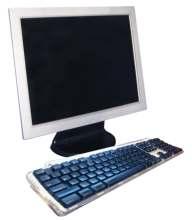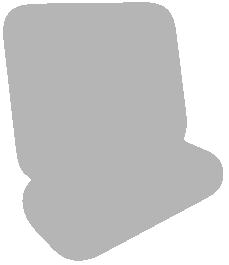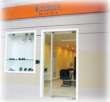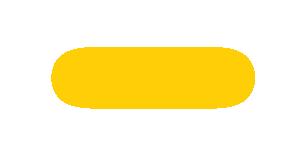















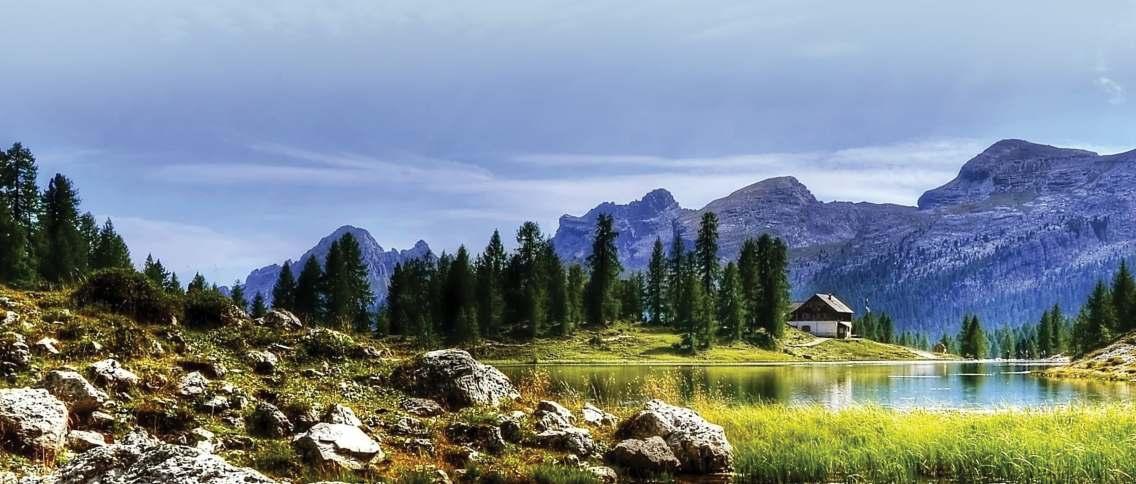

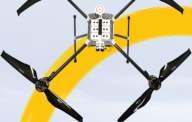
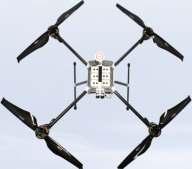

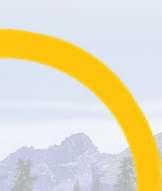






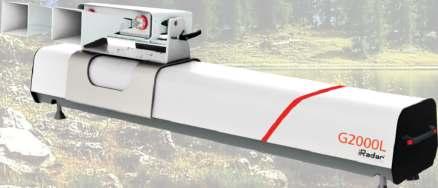








The Bailonggang WWTP is recognized as the largest plant of its type in Asia. This plant, located in Shanghai’s southern suburbs close to the estuary of the Yangtze River, began operating in 1999. In 2008 it was upgraded and expanded, and a further expansion in 2012 increased the plant’s capacity to 740 million gallons or 3.36 billion litres per day. The facility now processes more than half of the wastewater from Shanghai, China’s most populous city.
After a comprehensive survey of many options, Xypex was selected by the construction project group to waterproof, protect and enhance the durability of the eight Anaerobic Sludge Digesters, a Sludge Drying and Disposal Facility and Disposal Facility. All internal concrete faces of the eight digesters were treated with Xypex Concentrate. In areas where anaerobic activity and a highly aggressive chemical environment were anticipated, an acid-resistant lining was applied. However, the designers specified that Xypex also be applied to these specific areas as well, not only to provide secondary protection for the concrete but also to enhance the performance and durability of the primary acid-resistant lining.
For more informa�on on how our solu�ons can provide sustainable benefits for your concrete assets, please visit our website at www.xypex.com.au or LinkedIn Page.
Tel: +603-51928186 Fax: +603-51926826
Email: support@waterproofing.com.my www.waterproofing.com.my



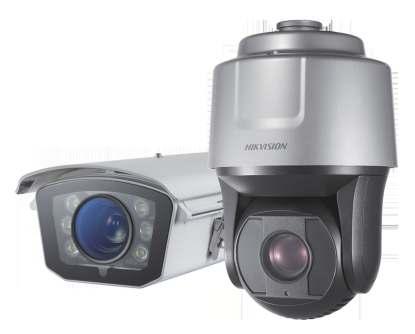


Hikvision has taken its DarkFighter technology up to the next level with the DarkFighterX Series PTZ and Bullet Cameras. Using single-lens, dual-sensor technology, each full HD DarkFighterX Camera mimics human eyes to render bright, full-colour images. How? By fusing two discrete light spectra: an IR sensor captures brightness, and a visible light sensor captures colour – even under 0.001 lux.
Install Hikvision’s DarkFighterX in city streets, public spaces, and critical travel nodes for the most critical protection. In colour – all day, all night.
For more information about how Hikvision DarkFighterX can benefit your business, please visit the Hikvision stand #7301 at IFSEC to learn more.




Number 02, FEBRUARY 2019IEM Registered on 1 May 1959
MAJLIS BAGI SESI 2018/2019 (IEM COUNCIL SESSION 2018/2019)
YANG DIPERTUA / PRESIDENT
Ir. David Lai Kong Phooi
TIMBALAN YANG DIPERTUA / DEPUTY PRESIDENT
Ir. Ong Ching Loon
NAIB YANG DIPERTUA / VICE PRESIDENTS
Ir. Prof. Dr Ruslan bin Hassan, Ir. Lai Sze Ching, Ir. Lee Boon Chong, Ir. Prof. Dr Norlida bt Buniyamin, Ir. Prof. Dr Jeffrey Chiang Choong Luin, Ir. Ellias Saidin, Ir. Gopal Narian Kutty
SETIAUSAHA KEHORMAT / HONORARY SECRETARY
Ir. Mohd Khir bin Muhammad
BENDAHARI KEHORMAT / HONORARY TREASURER
Ir. Dr Tan Chee Fai
BEKAS YANG DIPERTUA TERAKHIR / IMMEDIATE PAST PRESIDENT
Ir. Dr Tan Yean Chin
BEKAS YANG DIPERTUA / PAST PRESIDENTS
Y.Bhg. Academician Tan Sri Dato’ Ir. (Dr) Hj. Ahmad Zaidee bin Laidin, Y.Bhg Dato’ Ir. Dr Gue See Sew, Y.Bhg. Dato’ Paduka Ir. Prof. (Dr) Haji Keizrul bin Abdullah, Y.Bhg. Academician Dato’ Ir. Prof. Dr Chuah Hean Teik, Ir. Choo Kok Beng
WAKIL AWAM / CIVIL REPRESENTATIVE
Ir. Dr Lee Yun Fook
WAKIL MEKANIKAL / MECHANICAL REPRESENTATIVE
Ir. Fam Yew Hin
WAKIL ELEKTRIK / ELECTRICAL REPRESENTATIVE
Ir. Lim Kim Ten
WAKIL STRUKTUR / STRUCTURAL REPRESENTATIVE
Ir. Dr Ng Soon Ching
WAKIL KIMIA / CHEMICAL REPRESENTATIVE
Ir. Prof. Dr Lee Tin Sin
WAKIL LAIN-LAIN DISPLIN / REPRESENTATIVE TO OTHER DISCIPLINES
Ir. Roznan bin Abdul Rashid
WAKIL MULTIMEDIA DAN ICT / ICT AND MULTIMEDIA REPRESENTATIVE
Ir. Dr David Chuah Joon Huang
WAKIL JURUTERA WANITA / WOMAN ENGINEERS REPRESENTATIVE
Ir. Mah Siew Kien
AHLI MAJLIS / COUNCIL MEMBERS
Ir. Assoc. Prof. Dr Ahmad Kamil bin Arshad, Ir. Dr Tan Kuang Leong, Ir. Vincent Wong Khien
Ngie, Y.Bhg. Lt. Jen. Dato’ Wira Ir. Ismail bin Samion (Ret. RMAF), Y. Bhg. Dato’ Ir. Hj. Anuar bin Yahya, Ir. Mah Way Sheng, Ir. Gunasagaran a/l Kristnan, Ir. Chen Harn Shean, Ir. Mohd Aman bin Hj. Idris, Ir. Wong Chee Fui, Ir. Prof. Dr Leong Wai Yie, Ir. Razmahwata Mohd Razalli, Ir. Abdul Razak Yakob, Ir. Yau Chau Fong, Y. Bhg. Dato’ Ir. Foong Choy Chye, Y. Bhg. Dato’ Ir. Kisai bin Rahmat, Y. Bhg. Dato’ Ir. Nor Hisham bin Mohd. Ghazali, Ir. Toh Chin Kok, Ir. Dr Jeyanthi Ramasamy, Ir. Dr Wang Hong Kok, Ir. Yam Teong Sian, Y. Bhg. Dato’ Ir. Hj. Fakharazi bin Hj. Wahijan, Ir. Yasotha Ramachandran Chetty, Ir. Mohmad Asari bin Daud, Ir. Dr Lai Khin Wee, Ir. Ng Beng Hooi
WAKIL BAHAGIAN JURUTERA SISWAZAH / YOUNG ENGINEERS SECTION
REPRESENTATIVES
Yew Weng Kean, Addison Koh, Tony Ong, Kuugan Thangarajoo, Cheah Khai Chun PENGERUSI CAWANGAN / BRANCH CHAIRMAN
1. Pulau Pinang: Ir. Yau Ann Nian
2. Selatan: Ir. Teo Ki Yuee
3. Perak: Ir. Abdul Razak bin Ali
4. Kedah-Perlis: Ir. Haji Abdullah bin Othman
5. Negeri Sembilan: Ir. Dr Oh Seong Por
6. Kelantan: Ir. Abrizan bin Abdul Kadir
7. Terengganu: Ir. Atemin bin Sulong
8. Melaka: Ir. Sreedaran a/l Raman
9. Sarawak: Ir. Haidel Heli
10. Sabah: Ir. James Yong Hon Min
11. Miri: Ir. Prof. Dr Lau Hieng Ho
12. Pahang: Y. Bhg. Dato’ Ir. Sharuddin bin Mohd Simin
AHLI JAWATANKUASA INFORMASI DAN PENERBITAN / STANDING COMMITTEE ON INFORMATION AND PUBLICATIONS 2018/2019
Pengerusi/Chairman: Ir. Prof. Dr Ruslan Hassan Naib Pengerusi/Vice Chairman: Ir. Dr Lee Yun Fook Setiausaha/Secretary: Ir. Lau Tai Onn
Ketua Pengarang/Chief Editor: Ir. Prof. Dr Ruslan Hassan Pengarang Buletin/Bulletin Editor: Ir. Abdul Razak Yakob Pengarang Prinsipal Jurnal/Principal Journal Editor: Ir. Dr David Chuah Joon Huang
Pengerusi Perpustakaan/Library Chairman: Ir. C.M.M. Aboobucker
Ahli-Ahli/Committee Members: Ir. Ong Guan Hock, Ir. Yee Thien Seng, Ir. Chin Mee Poon, Ir. Dr Oh Seong Por, Ms. Michelle Lau Chui Chui, Ir. Prof. Dr Abdul Aziz bin Abdul Samad, Ir. Dr Wang Hong Kok, Ir. Razmahwata bin Mohd Razalli, Dato’ Ir. Nor Hisham Mohd Ghazali, Ir. Yasotha Ramachandran Chetty, Dr Sudharshan N. Raman
LEMBAGA PENGARANG/EDITORIAL BOARD 2018/2019
Ketua Pengarang/Chief Editor: Ir. Prof. Dr Ruslan Hassan Pengarang Buletin/Bulletin Editor: Ir. Abdul Razak Yakob Pengarang Jurnal/Journal Editor: Ir. Dr David Chuah Joon Huang
Ahli-ahli/Committee Members: Ir. Lau Tai Onn, Ir. Ong Guan Hock, Ir. Yee Thien Seng, Ms. Michelle Lau Chui Chui, Ir. Dr Oh Seong Por, Ir. Dr Wang Hong Kok, Ir. Dr Lee Yun Fook, Ir. Yasotha Ramachandran Chetty, Dr Sudharshan N. Raman
Secretariat: Janet Lim, May Lee
THE INSTITUTION OF ENGINEERS, MALAYSIA Bangunan Ingenieur, Lots 60 & 62, Jalan 52/4, P.O. Box 223, (Jalan Sultan), 46720 Petaling Jaya, Selangor Darul Ehsan. Tel: 603-7968 4001/4002 Fax: 603-7957 7678 E-mail: sec@iem.org.my Homepage: http://www.myiem.org.my


COVER STORY Re-engineering Shipbuilding & Ship Repair Sector
PRESIDENT’S CORNER
VOLUNTEERISM: MY PERSPECTIVE “We Make A Living by What We Get But We Make A Life by What We Give…” 12 - 13
FEATURE ARTICLES MARITIME INDUSTRY MALAYSIA Naval Ships Construction and Improving Local Content .....................................15
Role of Marine Technology Centre in UTM in Maritime Research, Training and Education .......22
Bringing Malaysian Engineering SMEs Global with MATRADE ...................................................26
ENGINEER’S LENS Tanjung Tualang Tin Dredge
Insight into Electrical System on Board a Ship
Metocean Technology and Its Importance in Ocean Sustainability ...........................................28 The Evolution of Marine Coating Technology ......32 15 - 34 ENGINEER’S ADVENTURES Sailing Between Two Continents
Interview

We are pleased to inform that IEM will be holding the 60th Annual Dinner and Awards Night 2019 on 20 April, 2019. Dimension Publishing has been appointed to put together the Annual Dinner Programme Book which will be circulated to all 1,200 guests on that night at Sunway Resort Hotel & Spa, Petaling Jaya
It is an annual event organised by IEM to present awards to winners of projects and to announce the new committee for year 2019/2020. Special guests of honour will be invited to officiate at the event.
We are now calling for interested advertisers to book their preferred advertising position in this programme book. Below please find the advertising rates for your immediate action and reply. We hope to hear from you soon before the closing date on 20 March 2019


Book Size: 210mm(W) x 285mm(H). Please provide extra 6mm for bleed area on all 4 sides
Printing Specifications : 230gsm art card (Cover), 105gsm art paper (Text), 4C + 4C, Staple binding, UV varnish on Cover
Quantity: 1,200 copies
Advertisement Format : High resolution PDF file, with crop marks, bleed area, text being outlined
Deadlines : : 20 March 2019 (Wed) (Ad Booking) 1 April 2019 (Mon) (Artwork Submission)
Kindly tick in the relevant bracket. IEM reserves the right to edit, revise or reject any advertisement deemed unsuitable or inappropriate. The final print-ready artwork to be furnished by advertisers.
Facing Inside Back Cover2,800
Run-On-Page (ROP)1,900
Double Page Spread (DPS)4,500
Remarks:
• Space availability is subject to booking on first-come-first-served basis
• Prices shown above exclude 15% Advertising Agency commission
• Please note that the above prices will be subjected to SST
• Any cancellation after signing the Advertising Contract shall result in a 50% penalty charge
• Payment term: 14 days upon invoicing
Name of Company:
Company Stamp & Authorized Signature:
Date:
Contact Person(s):
Email Address:
Company logo will be appeared in the Acknowledgement Page in both IEM Dinner Programme Book and JURUTERA May 2019
For advertising enquiries, please contact:
(449732-T) Level 18-01-02, PJX-HM Shah Tower, No. 16A, Persiaran Barat, 46050 Petaling Jaya, Selangor. Tel: +603 7493 1049 Fax: +603 7493 1047 Email: info@dimensionpublishing.com www.dimensionpublishing.com
DIMENSION PUBLISHING SDN. BHD. (449732-T)
Level 18-01-02, PJX-HM Shah Tower, No. 16A, Persiaran Barat, 46050 Petaling Jaya, Selangor Darul Ehsan, Malaysia. Tel: +(603) 7493 1049 Fax: +(603) 7493 1047
E-mail: info@dimensionpublishing.com Website: www.dimensionpublishing.com
Chairman
ROBERT MEBRUER
PATRICK LEUNG
General Manager
SHIRLEY THAM shirley@dimensionpublishing.com
Head of Marketing & Business Development
JOSEPH HOW joseph@dimensionpublishing.com
Production Editor CEO/Publisher
TAN BEE HONG bee@dimensionpublishing.com
Contributing Writers
PUTRI ZANINA & ZOE PHOON putri@dimensionpublishing.com zoe@dimensionpublishing.com
Senior Graphic Designer
SUMATHI MANOKARAN sumathi@dimensionpublishing.com
Graphic Designer
NABEELA AHMAD beela@dimensionpublishing.com
Advertising Consultants

Sby Ir. Roznan Abdul Rashid Chairman, Marine Engineering & Naval Architecture Technical Division
hips play a vital role in the marine industry and are used to transport cargo, passengers, containers, oil and liquefied natural gas. They are also used to obtain food from the ocean such as fish and other seafood.
Since our country is surrounded by sea, the Navy needs ships to patrol and defend our waters. Ships also play a vital role in supporting offshore O&G platforms in terms of transportation for crew and supply,maintenance, drilling and production as well as in research and hydrography in the ocean.
THAM CHOON KIT ckit@dimensionpublishing.com YEN YIN
Accounts cum Admin Executive
yenyin@dimensionpublishing.com
For advertisement placements and subscriptions, please contact: DIMENSION PUBLISHING SDN. BHD. (449732-T) Level 18-01-02, PJX-HM Shah Tower, No.16A, Persiaran Barat, 46050 Petaling Jaya, Selangor Darul Ehsan, Malaysia. Tel: +(603) 7493 1049 Fax: +(603) 7493 1047
E-mail: info@dimensionpublishing.com
Subscription Department E-mail: info@dimensionpublishing.com
Printed by
PERCETAKAN SKYLINE SDN. BHD. (135134-V) No. 35 - 37, Jalan 12/32B, TSI Business Industrial Park, Off Jalan Kepong, 52100 Kuala Lumpur. Mailer
SM UNIQUE MAILING SERVICES SDN. BHD. (44277-W) 80, Jalan Nadchatiram Satu, Taman Taynton View, Cheras, 56000 Kuala Lumpur, Malaysia. Tel: +(603) 9132 9192
JURUTERA MONTHLY CIRCULATION: 22,500 COPIES
Submission or placement of articles in JURUTERA could be made to the:Chief Editor
THE INSTITUTION OF ENGINEERS, MALAYSIA (IEM) Bangunan Ingenieur, Lots 60 & 62, Jalan 52/4, P.O. Box 223 (Jalan Sultan), 46720 Petaling Jaya, Selangor. Tel: +(603) 7968 4001/4002 Fax: +(603) 7957 7678 E-mail: pub@iem.org.my or sec@iem.org.my IEM Website: http://www.myiem.org.my
© 2019, The Institution of Engineers, Malaysia (IEM) and Dimension Publishing Sdn. Bhd.
PUBLICATION DISCLAIMER
The publication has been compiled by both IEM and Dimension with great care and they disclaim any duty to investigate any products, process, services, designs and the like which may be described in this publication. The appearance of any information in this publication does not necessarily constitute endorsement by IEM and Dimension. There is no guarantee that the information in this publication is free from errors. IEM and Dimension do not necessarily agree with the statement or the opinion expresssed in this publication.
COPYRIGHT
JURUTERA Bulletin of IEM is the official magazine of The Institution of Engineers, Malaysia (IEM) and is published by Dimension Publishing Sdn. Bhd. The Institution and the Publisher retain the copyright over all materials published in the magazine. No part of this magazine may be reproduced and transmitted in any form or stored in any retrieval system of any
without the prior written permission of IEM and the Publisher.
Even for leisure, there are cruise ships for those who like to holiday at sea.To maintain existing ships, build new ships to replace old vessels, ship building and ship repair (SBSR) is an important part of the marine industry. Without this, our ships may not be able to operate and modern ships may not be added to our existing ships. Even though the market has slowed down due to global oil price, SBSR is still important and it is possible to reengineer the industry in term of process,manpower skill and technology.
In this issue, First Admiral Dato’ Ir. Hj. Ahmad Murad bin Hj. Omar (Rtd), Vice President (Marine Related Industries) of the Association of Marine Industries Malaysia (AMIM), talks about how we can re-engineer SBSR in readiness for Industry Revolution 4.0.
by

Shortest month of the year, but we have so much to do before the new year.... yes, the Chinese New Year. We, Malaysians only go full throttle after.
This month,the Marine & Naval Architecture Technical Division’s theme, “Re-engineering the Marine Industry”, takes a good look at how we prepare ourselves for IR4 from the industry’s point of view.
The election of council members has started; please exercise your right to choose. You voted last year for the government and made a colossal impact, so let’s vote for IEM now. These will be people you entrust to take care of you, be your voice and continue to make IEM great. We are sophisticated people. We will not let bad politics stand in the way of the running of our organisation. We will continue to nurture young engineers, help the nation to develop and ensure high standards of engineering in all aspects.
20 April, 2019, is an important date, with IEM-AGM in the morning and Annual Dinner at night. Hope to see all of you there! The April issue of JURUTERA will also be a special and exciting issue to commemorate our 60th Anniversary.
On behalf of the Editorial Board,I take this opportunity to wish everyone a Happy Chinese New Year. May we continue to flourish with excellent health,prosperity and happiness.
Let’s continue to engineer our country to a greater height!
The Malaysian shipbuilding and ship repair sector (SBSR) needs a boost to improve its performance and, with the advent of the 4th Industrial Revolution worldwide, to prepare it to use and adopt current and new technologies.

Although this industrial sector of Malaysia’s marine industry has been around for more than a century, it needs a bigger push to survive today’s rough waters.
The sector, however, continues to contribute to the economy,employing over 15,000 people and recording a total trade of RM6.1 billion in 2017,which is less than 1% of the total marine trade of RM1.5 trillion.
There are about 100 shipyards in the country, of which only one-third is located in Peninsular Malaysia as most shipbuilders are based in Sabah and Sarawak.
In fact, the sector has its roots in Sarawak with the establishment of the Brooke Dockyard about 100 years ago. Since then, local shipbuilders have been selling vessels to all over the world.
The SBSR sector’s core production and construction group comprises ship builders and repairers as well as marine equipment manufacturers. It supports activities in the shipping industry, including naval architecture and system design,parts and components manufacturing, system integration and other marine equipment production as well as fisheries, oil and gas,
ports operation and tourism-related activities (leisure/recreational).
While SBSR is well-entrenched in the local marine industrial landscape, with adequate infrastructures, particularly in the building and repair of small/medium-sized vessels, Malaysia only ranks 18th on the list of the world’s largest shipbuilding countries in terms of gross tonnage produced (2015 statistics from Malaysian Industry-Government Group for High Technology – MIGHT), behind Vietnam, Myanmar and The Philippines.The top three countries on the list are China in the pole position, followed by South Korea and Japan.
According to Dato’ Ir. Ahmad Murad bin Omar, Vice President (Marine Related Industries) of the Association of Marine Industries of Malaysia (AMIM), our ranking dropped even further to 24th position in 2017. He says the SBSR sector is still troubled by long-standing local issues, which are also impacted by the global situation of economic slump and fluctuating oil prices in recent years which caused a plunge in orders, including a drop in charter hires.
He says some of the issues that continue to plague the SBSR sector include ill-equipped infrastructure for shipyards,medium-levelofautomation in shipyards, as well as high repair and maintenance costs and lack of support from financial institutions. Banks charge high interest rates of up to 8.25% of the base lending rate. Reduced orders and slow payments from clients have forced the players in the sector to stall payments to the banks.
He adds that government interventionhasalsonotbeenvibrant. The situation is compounded by the current slow-down on government tenders and reduced funds which haveresultedinlessnewbuildvessels, while existing vessels are ageing and requiremorerepairs,thecostofwhich areontheriseastheservicelifeofthe vessels are continued.
However, the SBSR sector
has received a lifeline from the government in terms of special incentives under IncomeTaxAct 1967 and the exemption of paying Sales & Service Tax (SST) for ship repair and certain types of ships.
Another issue the sector faces concerns human capital with its heavy reliance on foreign labour. While Malaysia has the numbers, there are not enough skillsets among local workforce to meet requirements. For instance, foreign ship designers are preferred over local designers.
It was highlighted that although Malaysian ship owners spend US$9 billion for acquisition of new build, only 5.5% are captured by local builders while the rest go abroad. Shipbuilders and repairers in neighbouring countries have the pull factor including lower costs (labour, build and repair), as well as a faster turnaround time.
However, locally-built ships, including ferry boats, barges, yachts, tug boats and fishing vessels, are accepted by international markets, such as USA,UK,UAE,India,Singapore and Indonesia.Ninety per cent of the exported vessels are built in Sabah and Sarawak, while the rest are from the peninsula.
Toaddressthekeyissuesaffectingthe SBSRsector,thegovernmentlaunched in2010,theShipbuilding&ShipRepair Strategic Plan 2020 which outlined 7 key strategies:
1. Capture 80% of local new build market.
2. Capture 2% of global new build market.
3. Capture 3% of market shipping vesselsplyingtheStraitsofMelaka.
4. Capture 80% of South China Sea offshore repair market.
5. Focus development initiatives on niche market involving vessels shorter than 120m in length.
6. Achieving the above,the maritime industry aims to penetrate RM6.35 billion in gross national income.
7. Provide 55,000 jobs by 2020, and making the number sustainable.
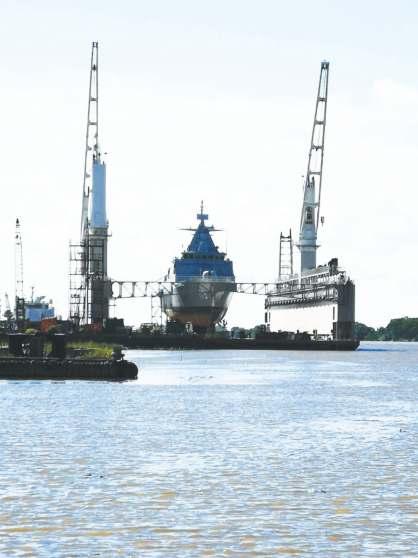
Ship docked utilising Floating Dock
It has been some eight years since the launch of the SBSR Strategic Plan. MIGHT reports that progress of the plan has been off target with only 60% achieved overall. With 2020 only a year away and with the current lacklusterperformanceofthesector,it is unlikely that the remaining 40% can be achieved.
The focus has moved away from the SBSR Strategic Plan and MIGHT is now placing greater emphasis on the sector’s awareness and readiness to face 4IR.In line with this,the government has jumped on the bandwagon to develop 4IR with the creation of the National Policy on Industry 4.0, led by the Ministry of International Trade & Industry. Launched in October last year, the policy advocates the use and adoption of high technology products and processes.
SBSR sector players are also expected to evolve from the conventional methods of building and repairing to using and adopting current technologies, namely 4IR disruptive technologies, such as Big Data Analytics, Artificial Intelligence, 3D Design andAugmented Reality;all are regarded as Shipbuilding 4.0.
MIGHT’s definition of Shipbuilding 4.0 can be characterised by the adaptability, resource efficiency and close interaction between ship owners and shipbuilders, with real-time monitoring where the design, shipbuilding, operation and maintenance are automated and digitised.
Companies in SBSR have been encouraged to keep track of technology trends in shipbuilding (see table below) and to adopt 4IR technologies and processes in order to reduce their dependency on foreign labour,to improve productivity andtoenhancetheircompetitiveness.
Trend #1 Big DataAnalytics (digitalisation of shipyards)
Trend #2 Cloud Computing (connect with previous and potential clients in digital space)
Trend #3 Internet ofThings (digitalisation of monitoring construction process)
Trend #4 Cybersecurity (network security)
Trend #5 Augmented Reality andVirtual Reality (training and design virtualisation)
Trend #6 Advance Manufacturing (supporting manufacturing parts and components e.g. 3D printing propeller
Trend #7 Autonomous Robot (spider autonomous robot crawls for blasting,painting and welding ship surface; and autonomous ship)
Trend #8 Smart sensors (RFID for inventory and process control)
Trend #9 Advanced Materials (metallic,ceramic and composite in nano scale for building materials)
Trend #10 Simulation (optimisation of process and technology in shipbuilding)
Trend #11 System Integration (digital integration across system/value chain)
Trend #12 Energy Efficiency (propulsion system: hybrid technology and renewable energy
(Source: Malaysian Shipbuilding/Ship Repair Industry: Positioning In The Industry 4.0, MIGHT Report, 2018)
MIGHT has also identified SBSR technologies related to Industry 4.0 which can be spread across the sector.These are:
• Robotics–weldingrobots,inspection and monitoring, cleaning and rust removing,andequipmentsorting.
• Internet of Things – safety management platform, safe navigation and satellite communication to improve ship and shore communication.
• Cloud Computing – transmission of digital information.
• VirtualReality&AugmentedReality – training and simulation (lifesaving,cabin simulation,complex operational training, ship motion control testing to moderate the magnitude of oscillation of ships, information and entertainment, ship design – to improve the quality of construction, operation, maintenance and job design and equipment for shipping.
• 3D Printing – method to print the whole vessel and research on materials suitable for 3D printing application in the context of SBSR.
• Big Data – to improve communication system e.g. traffic command, ship and shore interconnection, acquisition efficiency, traffic control ship ad hoc network, monitoring ship system and energy efficiency,data processing and storage and structure for managing ship materials.
Though the local SBSR sector is exposed to developments in international shipping and SBSR industries worldwide, it is still behind in terms of sophistication and technological advancement when compared to the world’s major shipbuilding nations. Malaysia’s leading shipyards can build fairly sophisticated mid-sized vessels, offshore support vessels (OSV) for clients as far as the United States, Europe, Australia and New Zealand as well as service large-sized vessels. Our top shipyards have cutting edge equipment such as plasma cutters and Computer Numerical Control (CNC) machines which use computers to execute preprogrammed sequences of machine control commands.
Some players, however, still lack understanding of 4IR and so, may miss the opportunities that it brings. There are also resistance towards technologies, conservative business strategies, lack of regulatory and policy push, and absence of financing to invest in assets,solutions and human capital.
AMIMwillalsofocuson4IR,inaddition to 6 other factors affecting the sector, namely government tariff for ships and boats, sales and service tax, government procurement policy, fishing boat design development, maritime training and development of the yachting industry.
Dato’ Ir. Ahmad Murad says the variousstakeholdersintheSBSRsector must play their respective roles. The governmentcanfacilitatefundingand subsidies, emphasise on localisation of shipbuilding and shipping industry, provide regulatory and protection for local players, advance technology and engineering for the sector as well as further develop supporting industries.
In terms of incentives to support growth, AMIM has suggested exemption from SIRIM inspection of imported raw materials which have been certified by class rule, implementation of the Industry

Sika provides direct glazing, teak decking, exterior and interior sealing and bonding, as well as acoustic flooring systems in the manufacturing and repairing of leisure boats, commercial vessels and offshore platforms. Our elastic bonding and sealing solutions are designed with the harsh marine environment in mind: resistance to water, sun, cleaning chemicals and fatigue. Sika offers a range of flooring products, each of which have a levelling and smoothing aspect, as well as varying degrees of noise and vibration reduction properties. All this, coupled with fire performance, assures that the requirements of both ship owners and regulatory bodies are met.
Collaboration Programme for government acquisitions to provide avenues for the development of the SBSR sector as well as efforts to boost SBSR outsourcing; for example, government-procured vessels must be built in Malaysia while repair for the country’s defence fleet must be outsourced to Malaysian companies.
AMIM will continue efforts to engage with financial institutions for better packages and terms for SBSR sector players and to urge ship owners to buy local and encourage the development of local contents by Malaysian producers and designers. AMIM will also continue to monitor the exemption from SST for vessels such as ferries,fishing vessels,tugs and yachts as well as the special incentives accorded to the SBSR sector under IncomeTax Act 1967.
In meeting future requirements, there should be greater use of robotics in manufacturing and shipbuilding, autonomous and safe operation on IoT platform, transmission of digital information through Cloud Computing, TRG and simulation, ship design and production design process under Virtual Reality and Augmented Reality,various dynamics and walk-throughs under 3D Printing and improved communication and data processing under Big Data.
Dato’ Ir. Ahmad Murad says the focal point should be ship design and engineering (customisation, speed,
accuracy, optimisation in view of competitiveness), ship construction (automation, modular, robotics and virtual reality), value chain management (computerised project management) and ship service and support (integrated logistics support, supply chain and data linking).
As for future human capital skill requirements, five areas have been singled out, namely production and management control, software development,data security and data management, digital production plant/cyber security and digitised marketing.
According to Dato’ Ir. Ahmad Murad, there is still a mismatch in some areas between the actual requirements of the marine industry and the courses and skills training provided by institutions of higher learning,including those carrying out Technical and Vocational Education &Training (TVET) programme.
“Though TVET educational institutions are getting the needed resourcestocarryouttheprogramme, most of the planners do not have clarity as to the increasing skills needed. Even if they do, they cannot get support from the established bureaucracy nor change the mindset in these institutions.There is also a lack offocusamongTVETinstitutionsanda lack of proper co-ordination between the public and private sectors to produce local skilled workers,” he explains,adding that the educational streams for universities and other training facilities are focused on
differentlevelsofskillsetswhicharenot necessarily required by the industry.
The key questions to ask are:Is the curriculum appropriate? Are skillsets taught relevant? Are peripheral skills, such as interpersonal skill, project management,safety and health and business acumen basics, taught as well?
He laments that unless the mismatch is addressed, the marine sector in the country will continue to face a dearth in workers with the required industry skills.
It is now even more crucial to change and update training requirementsaspartofpreparationsfor 4IR and in particular,Shipbuilding 4.0.
The waves of digitalisation have already swept in.Resisting change will be futile. The industry cannot afford to maintain conservative ways of doing business and expect to remain competitive. Already, SBSR is suffering from the downturn which forces players to scale back, downsize and focus only on investing in assets that are central to their business.
They are not readily adopting new technologies in the context of 4IR and arequestioningwhethertheadoption of such technologies will result in real economic value and competitive advantage. What is needed from stakeholders is to educate lead agencies and industry associations about 4IR, its issues, challenges, threats and opportunities. Industry players must swim with the tide of 4IR if they want to stay competitive and sustainable for the long haul.


JURUTERA has an estimated readership of 168,000 professionals. Our esteemed readership consists of certified engineers, decision making corporate leaders, CEOs, government officials, project directors, entrepreneurs, project consultants, engineering consulting firms and companies involved with engineering products and services.
Our business partners can be assured that their products and services will be given the circulation and exposure they deserve, thus maintaining a sustained advertising presence to our core readers of decision-making engineers and technical experts. Our website offers an even wider market reach, with added international presence, aided by our international affiliation with official engineering bodies all over the world. Our online and offline advertising features such as banner advertising, article sponsorship and direct e-mail announcements have proven to be successful marketing strategies that will set the businesses of our partners apart from their competition.


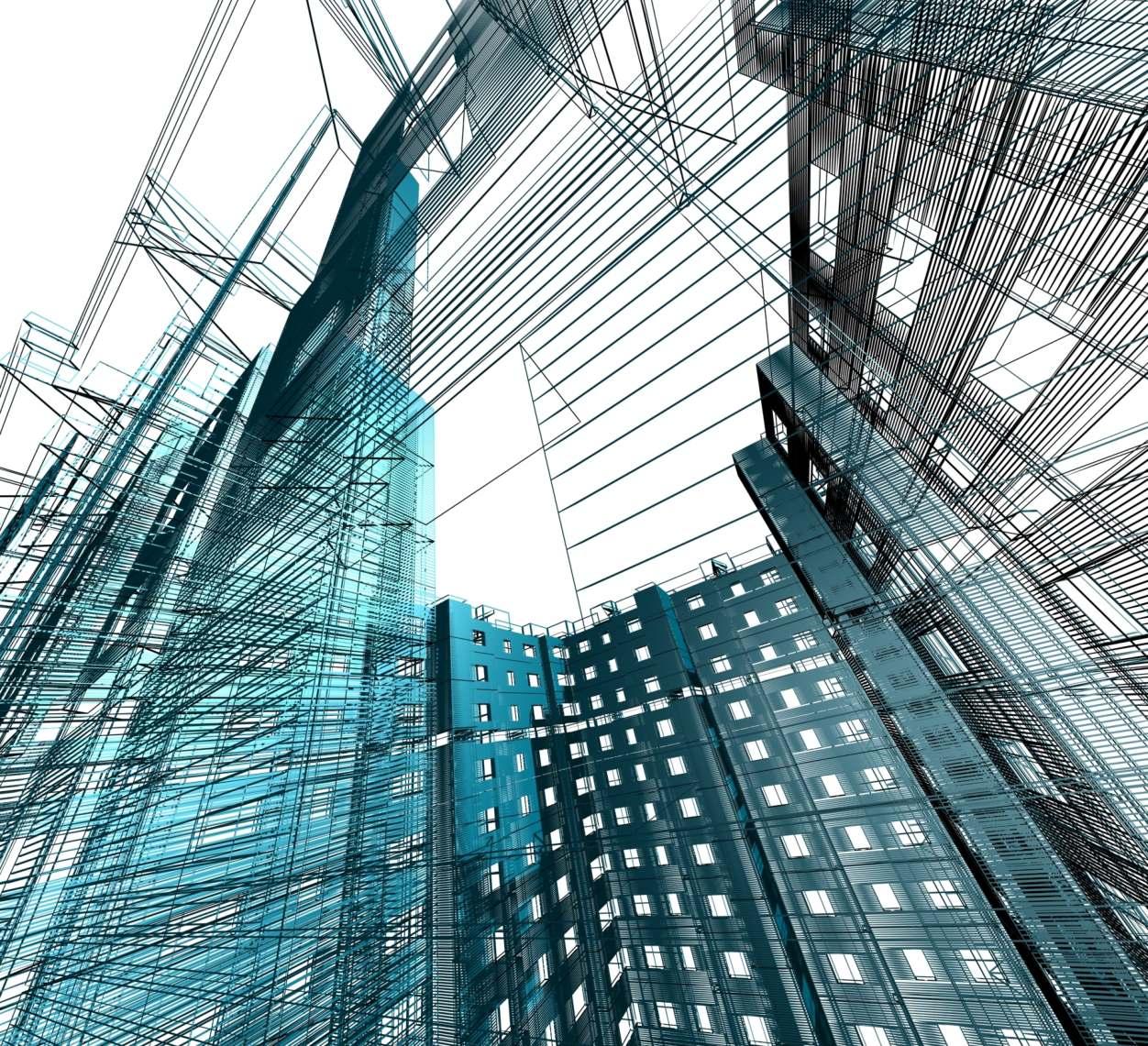
For advertising enquiries, please contact:






“WE MAKE A LIVING BY WHAT WE GET BUT WE MAKE A LIFE BY WHAT WE GIVE…”
Ihave often been asked why I spend so much time,effort and even my own money on volunteerism. Like most people, I did not do volunteer work in my early years. Instead, I was chasing success in the normal economic parlanceofaccumulatingwealth.However,Ididparticipate in IEM activities;I was a member of IEM as the affiliation was necessary for my professional work. I did not realise then that IEM would be my introduction to voluntary work later in life.

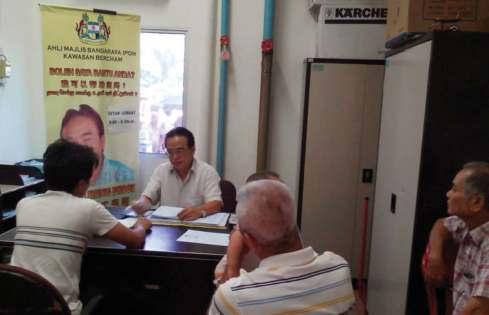

That was 30 years ago.Besides IEM,I was also a Rotarian and did a 6-year stint as a Councillor with the Ipoh City Council where my voluntary services took on a new dimension,that of serving the public at large instead of just engineering professionals in IEM.
Today, as I reflect on my long journey with IEM and the Ipoh City Council, I often wonder if it is all worth the while. Certainly, there have been numerous challenges along the way but through the trials and tribulations,I have learnt that by giving to and serving a good cause,we help make the world a better place.That in itself, is a reward of immeasurable value and well worth the sacrifices made.
Volunteerism is a basic expression of human relationships.It is about one’s need to participate in society and to feel that one matters to others. The social relationship intrinsic to
volunteer work is critical for individual and community wellbeing. In addition, the ethos of volunteerism is infused with values such as solidarity,reciprocity,mutual trust,belonging and empowerment, all of which contribute to a better quality of life.
Our economic system prescribes the social structure for how we work and what it means to succeed in a world of limited resources. It is premised on values of self-interest and competition to achieve maximum satisfaction.It won’t meet expectations of higher values that we seek once our basic survival needs are met.However,volunteerism is able to address this as it focuses on values, consultation and cooperation as well as allows for the human spirit to thrive.
Volunteerism has always come naturally to me and my passion to serve has seldom swerved from the noble

objectives of the posts that I have been entrusted with. However,for many volunteers,there is often a disconnection between what they are trying to achieve and what the organisationistryingtoaccomplish.Thiscausesdisharmony, creates animosity and detracts from the overall objectives. In some cases, protractors realise their folly, retreat to correct their approaches and perhaps come back with more appropriate actions. In other cases, they continue to champion personal agendas, oblivious to other opinions and so, often inflict serious or permanent damage along the way.
In voluntary organisations,a diversity of opinions ensures that individuals do not dominate or supplant the common good.There are rules and regulations, standard operating procedures,accepted practices and even simply traditions to guide the process of decision-making and how things are done.Altruism lies at the heart of volunteerism.This means we work by consensus, cooperation and compassion, not by competition,conflict and confrontation.
Perhaps the problem is that not everyone has had the opportunity to experience the joys of giving, sharing


and knowing that good deeds, no matter how small, can bring about positive changes and betterment to others. Admittedly, it can be a rather big jump in faith for those whose lives are conditioned by competition and to take and keep what is ours, to a life where we give back to society without any apparent reward.
What then is it that makes us serve IEM members and indirectly, the engineering community at-large, though volunteerism? Are we truly altruistic or are we simply indulging in personal glorification/gratification? Are our efforts aligned with the IEM’s aspirations or are we simply championing our own individual agenda?
These are questions I constantly ask myself. I’m sure other volunteers too ask themselves the same questions. Our answers may not be the same or be right but these questions will guide us to be cognisant of the basic tenets of volunteerism.
I end with a quotation: “Volunteers do not necessarily have the time; they just have the heart.”
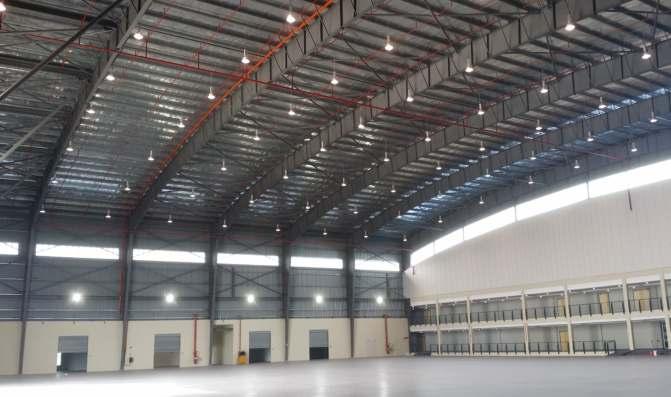
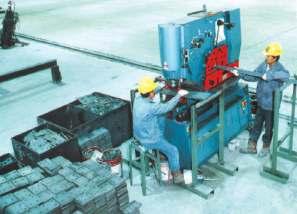
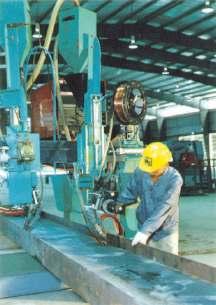


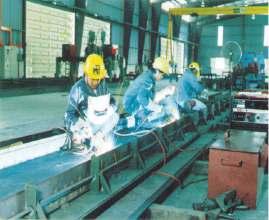


The Royal Navy (RN): In the early 1990s, the RN was a force designed for the Cold War; the main purpose of the fleet at that time was to search and, if required, destroy Soviet forces in the North Atlantic. The Falklands War demonstrated a requirement for an expeditionary force capability and indeed it was an incredible demonstration of sea-poweri
Of the 75 commissioned vessels in the RN, 20 are major surface combatants (with strike capabilities destroyers, frigates and aircraft carrier),10 nuclear powered submarines as strategic assets and others are support and patrol vessels. One of the oldest navies in the world,dating all the way to Vice Admiral Horatio Nelson’s days battling the Spaniards and French combined fleet at the Battle ofTrafalgar in 1805, the RN has been a reference for many navies throughout itsdevelopment,includingtheRoyalMalaysianNavy(RMN).
Recently,“a Freedom of Information request”confirmed that more foreign shipyards than British ones attended a Ministry of Defence industry day for those interested in the £1bil contract to construct three new“solid support ships” for the Royal FleetAuxiliary”ii
To add to the news release above, Defence Ministry officials were quoted as saying that seven foreign companies – from Germany,Italy,the Netherlands,Poland, South Korea and Spain – were at the event, compared to just five UK-based shipbuilders. The UK is heading for change from its role as a ship building nation.
RMNProgressiveAssetAcquisition: In1996,theRMNplanned to acquire a total of 27 New Generation Patrol Vessels (NGPV) to fulfill its planning requirement. The German Bhlom & Voss MEKO 100-based design was selected and a contract for 6 NGPVs was signed in 2003. However, due to management failure of the main contractor, PSC-Naval Dockyard Sdn. Bhd. (PSC-ND), progression was seriously delayed and led the programme into crisis.Then Boustead Naval Shipyard Sdn. Bhd. (BNSSB) took over from PSC-ND, thus regaining momentum for the programme.After a long waitof18months,thefirst2hulls, KD Kedah and KD Pahang, were commissioned in June and August 2006 respectively. As of July 2009, all 6 ships had been constructed and delivered,2 in Germany and 4 in country.While this project wasinprogress,theRMNstarteditssubmarineprocurement programme.
Two SCORPENE submarines were ordered by the RMN on 5 June 2002 under a €1.04 billion (about RM4.78 billion) contract. The 2 submarines were built jointly by
Over time, the Royal Navy (RN) began a series of projects to improve its fleet. The Royal Navy is the principal naval warfare service branch of the British Armed Forces. As of November 2018, there are 75 commissioned ships, of which 20 are major surface combatants (6 guided missile destroyers, 13 frigates and 1 aircraft carrier) and 10 are nuclearpowered submarines (4 ballistic missile submarines and 6 fleet submarines). In addition, the RN possesses two amphibious transport docks, 13 mine countermeasuresvessels,23patrolvessels,foursurvey vessels, one icebreaker and two historic warships (Victory and Bristol).
French shipbuilder DCNS and its Spanish partner,Navantia. These vessels are classified as Perdana Menteri Class, in service with RMN. Both submarines were constructed and delivered in France and Spain. RMN has an outstanding requirementforaMultiRoleSupportShip(MRSS)toreplace KD Inderapura but to date,nothing has materialised.
The RMN still needed a vessel replacement programme and,in 2014,Malaysia signed a contract agreement worth RM9 billion (US$2.2 billion) which was awarded to BNSSB to build 6 frigate class ships under the Littoral Combatant Ship (LCS) programme.The ships will be built based on the ‘Gowind’ 2500 corvette designed by French shipbuilder DCNS.All 6 are to be constructed in Malaysiaiii (to date the RMN is yet to take delivery of any).
In 2016,Malaysia and China agreed to jointly develop a Littoral Mission Ship (LMS) where 2 ships would be built in China by China Shipbuilding & Offshore International Co (CSOC) and the remaining 2 would be built in Malaysia by BNSSB.A total of 18 ships of this class has been planned. The first will be delivered by 2019,the second and third by 2020andthefourthby2021forthefirstbatch.Thefollow-on batches have yet to be announced as part of the RMN 15 to 5 expansion programmne.
The above are just some of RMN’s experience in the acquisition of naval ships programmes. Some ships were
designed and built overseas but others were designed by foreign designers, built by them and partially built in country. Finally, for LCS, all 6 frigates will be constructed in country but designed by a foreign designer.
Local Market Outlook: To analyse the RMN experience, in particular the naval ships acquisition programme, and to afford some improvements in local content, first the areas of improvement need to be identified, most importantly
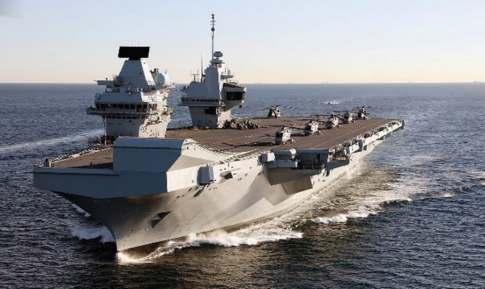
https://en.wikipedia.org/wiki/Future_of_Royal Navy
how the programme can be brought closer to home. According to research by Malaysian Industry-Government Group for High Technology (MiGHT) in its publication, “Industry Report 2017/2018”, the Malaysian Shipbuilding & Ship Repair Industry (SBSR) is well clustered on both sides of the peninsula with 31 shipyards and Sabah & Sarawak registering 68 shipyardsiv. Going further into the industry outlook, in coping with the slump of oil prices and plunge in orders, many shipbuilders are making restructuring plans and struggling for survival. Localising to commercial versus government revenue for SBSR,only 67% are from the commercial segment and 33% from the government. By approximation,naval construction is under the government segment.
In 2016,industry revenue was estimated at RM5.56 billion as a result of global economic turmoil. From the graph in Fig 1,there seem to be a downturn in revenue from 2013 to 2016v. This demonstration of trending in revenue includes commercial and naval ships,both in repair and newly-built.
Government Incentives: The Government is rather concerned over this trend and, in an effort to give the industry an upward lift, introduced several incentives via guiding policies. Among them are exemption from SIRIM testing, Industry Collaboration Program (ICP), Government procured vessel to be built in Malaysia and ship repair for defence to be outsourced to local companies, exemption on import duty, special tax incentives and zero-rated GST. (See Fig 2)vi
Revenue Turn-Over: The Malaysian Maritime Industry is closely watched by the Government and incentives are in place to support local industrial players.But what is obvious

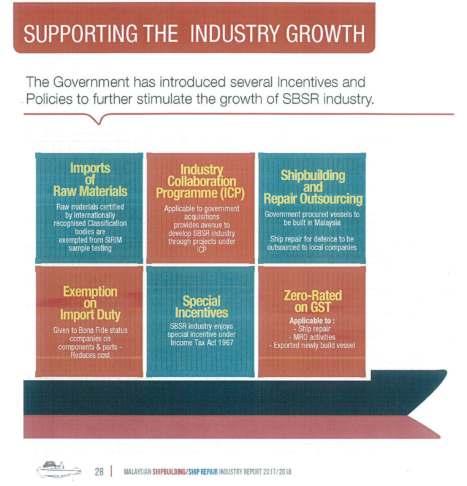
is that revenue turnover for SBSR industry is still showing a decline. Focusing on naval ship building in particular, are there areas of improvement that may support the industry and eventually give rise to the revenue turnover for local shipbuilders? Continuing to build ships and to use foreign designs will only push the Ringgit out of Malaysia rather than keep it in the country.
Local Design: Pushing the Malaysian SBSR community and forcing them to be more self-reliant but not without

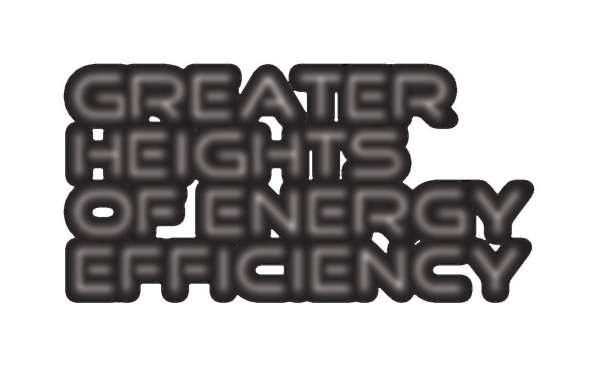

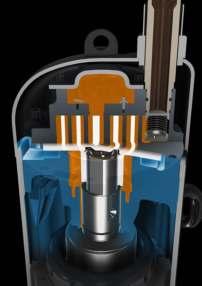
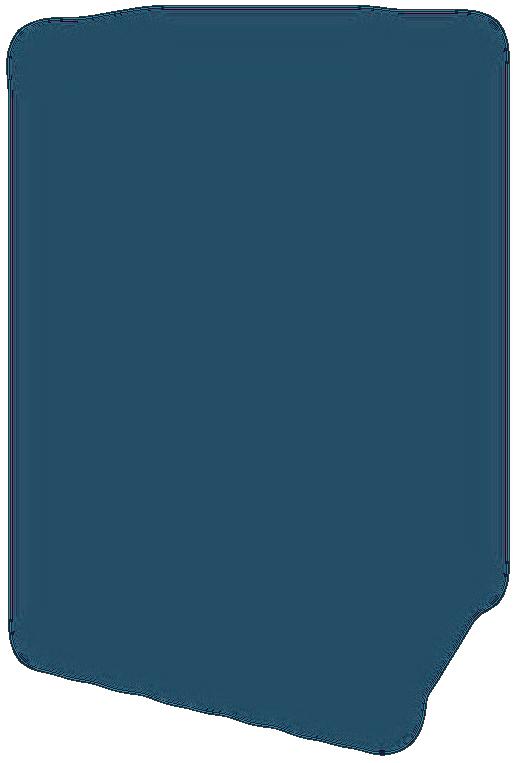



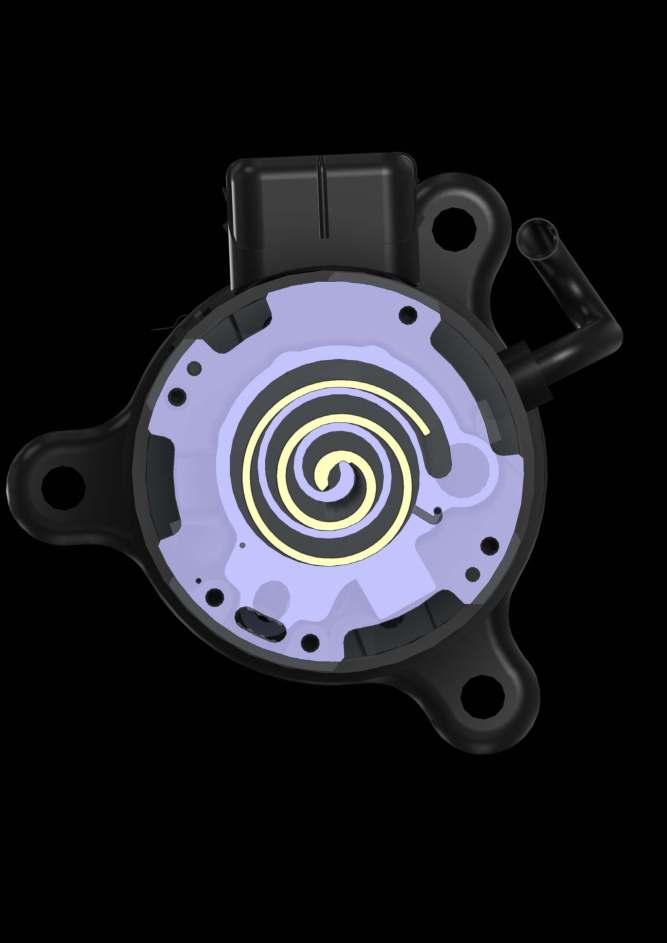
Explore our full set of Professional and Integrated PUBLISHING MANAGEMENT SERVICES:
» Project Management
» Crea�ve Management
» Ad Space Management
» Mailing Management
» Print Management
• Annual Reports
• Booklets • Brochures
• Bun�ngs • Business Cards
• CD / DVD Replica�ons
• Calendars • Cards & Invita�ons
• Cer�ficates • Custom Prin�ngs
• Envelopes • Folders
• NCR Bill Books • Notepads
• Leaflets • Le�erheads
• Paper Bags • Posters Others
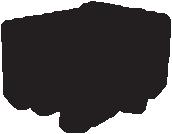



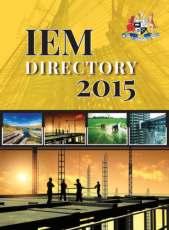








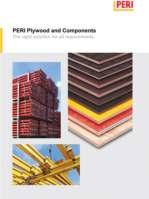





























Government intervention will not be wise.The first step is to encourage local design content.There are many local design companies which have proven their capabilities. In testimony, these companies have designed and local shipyards have built ships and boats even for local and foreign market (including naval ships).
So it is just a matter of giving them the opportunity,starting with the simpler LMS to the more complex frigates.The issue is whether the local designs can meet the stringent RN standards.With proper guidance,gradual improvements and exposure for these local companies can advance them in good time to be at par with if not even surpass foreign designers. In the RN experience mentioned earlier (where the new support ships acquisition contract worth £1bil was seen to attract foreign designers/builders),since the United Kingdom is a world leading naval ship builder,such a project should have been a local contract. So, this is proof that Malaysia may, one day, be able to take on the challenge and bid for foreign naval ship building contracts.
Elements of Local Content: Local content does not only include design. The design may be the beginning and issues like incorporating the latest technologies in the design would be welcome,such as improved‘survivability’ which is vital in a naval ship construction, using fuel saving technology by employing engine manufacturers which make engines maximising fuel burning and reducing emission and advanced hull polishing anti-fouling paint which reduces resistance when the hull is cutting through water.
Others may be propulsors where designers have developed optimised propellers with flow assistors and the“Hybrid”as in the RN Type 23 frigates with CODLAG (Combined Diesel and Electric and Gas) propulsion system. The approach of “picking the low-lying fruit then gradually moving to the higher reaching ones” as an initial strategy is something that local SBSR designers may consider. Simple elements that can be incorporated in the design and which are readily available in the country – such as ‘outfitting’, fabrication technique, skill sets related to shipbuilding that are available amongst locals, local manufactured products and local assembled products – should be given priority.
Local SBSR players should be clustered in production related groups, such as hull, outfitting, marine propulsion, auxiliaries, electrical generation and power, distribution, communication system and navigation aids, weapons and weapon systems.Once the clusters have been formed,they must then be nurtured to work in sync with the development of local content for the naval ship programme.The designers and clusters then move as one in achieving the local content agenda.
Government Intervention: So far it is the industry participation and initiatives that have been discussed, not government intervention.Naval ships programmes are, all the time, contracted by governments, starting with the open tender as opposed to directly awarding to designated Government Linked Company (GLC), followed by tender evaluation and subsequently contract award. It is at these early stages that the government and the incollaboration with the end-user agency (RMN) determine the specifications of the intended naval asset to be acquired fit-for-purpose and economically priced and compliant to local-content agenda. Close discussions with SBSR cluster groups are also encouraged at this phase.Once the awarding is done and the government project supervising team appointed, then the project takes off on the right footing.The government funding must first be available and the government supervision team appointed must be one equipped with skill-sets to allow them to become ‘enablers’ rather than show-stoppers. Such examples of experience and skill-sets are:
• Engineering knowledge
• Operational knowledge
• Project management



The end result will be a supervising team and shipbuilder/s (with SBSR cluster) working together, each having a common goal of achieving on-time delivery of the intended naval asset meeting operational requirements in functionality and satisfying local-content agenda at the right pricing and return of investment fulfilled meeting the National Economic Policy.This should be the objective of a naval asset acquisition programme for Malaysia which,although not exhaustive but is close enough. This approach is a major departure from the traditional
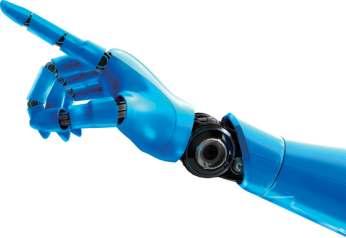
This article started by providing an insight into the process of naval asset acquisition of the old and seasoned Naval Fleet of the United Kingdom. It demonstrated that even the age-old RN admitted that changes were necessary for progress.Then came an assessment of the Malaysian naval fleet development till this day and the involvement of both local GLCs and foreign entities.The study carried out by MiGHT showed that in the past seven years (especially 2013-2016), there was a decline in SBSR revenue despite government incentives in support of SBSR.One of the approaches to boost the revenue is for current and future naval ships acquisition to make local content one of fundamental overriding factors. Local content,when looked at objectively and with stringent government-led implementation policies, can ensure a delivery system that matches the needs and requirements of the end-user agency and, at the same time, satisfy the nation-building efforts to up-skill SBSR clusters by providing them with employment opportunities to develop and become global competitors of the future. It will also achieve economic growth as well as contain the Ringgit,






















































































2 Day Course on “Fire Control Concepts & Design of Active Systems”
Date:18 – 19 February 2019 (Monday - Tuesday) Time:8.30 a.m. to 5.30 p.m.
Venue:Wisma IEM
Approved CPD :13
Speaker:Ir. Gary Lim Eng Hwa

Awareness Talk & PI Workshop on Enhanced Process
Date:23 February 2019 (Saturday) Time:9.00 a.m. to 1.00 p.m.
Venue:Wisma IEM
Approved CPD :3
Speaker:Ir. Chen Harn Shean



The Marine Technology Centre (formerly known as Marine Technology Laboratory) was established in 1996 and officially opened by our 4th Prime Minister, Tun Dr Mahathir bin Mohamad in 1999. It was upgraded by the Minister of Higher Education (MOHE) in 2003. It is the only hydrodynamic centre in the country and fulfills the following functions:
• Provides teaching facilities for Marine Technology undergraduate students.
• Facilitate R&D work for academic staff and postgraduate students.
• Serves the Marine Technology needs of the marine industry by providing ship and floating structures model testing and associated services.
The centre, a member of the International Towing tank Conference (ITTC) since 1998, is one of the recognised hydrodynamic testing facilities in region. Its capability is tailored to become the premier teaching, research and consultancy institution in the field of Marine Technology in the region.As a Centre of Excellence to the University,Marine Technology Centre has made significant contributions to the growth of the maritime industry in Malaysia.
There are 4 major research groups as follows:
• Marine & Offshore Design.
• Marine & Offshore Hydrodynamic.
• Marine &Transport Management.
• Marine Environment & Renewable Energy.
Apart from research, MTC also provides a number of services meant to be delivered to maritime related communities upon request.These include:
• Ship Resistance / Drag Measurement.
• Ship Powering Prediction.
• Ship PropulsionTest.
• Ship Manoeuvring Simulation.
• Sea keeping Behaviour in Waves.
There are a number of facilities available at MTC to support the activity.The 4 major ones are as follows:
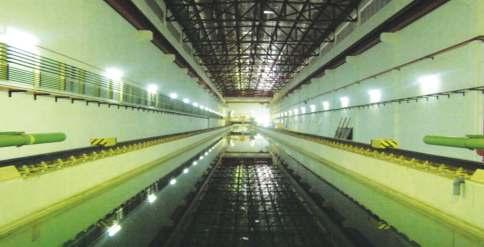
Principal dimensions: Length 120m (Useful Length 90m); Width 4m;Water Depth 2.5m
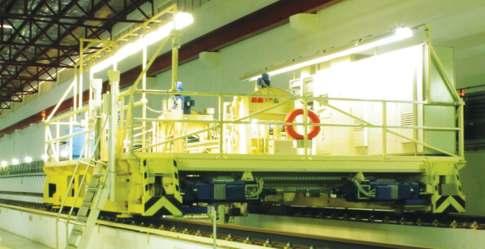
The towing carriage tows the ship models at speeds of up to 5m/s.
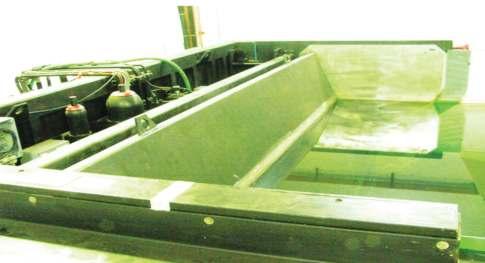
The wave generator consists of a hinged dry back type flap, hydraulically driven and computer controlled. The wave generator of the basin is capable of generating regular and irregular waves over a wave period range of 0.5 sec to 2.5 sec.The irregular waves, characterised by a JONSWAP or Pierson-Moskowitz spectrum, can be generated up to a significant height of 0.44m, while it is also possible to generate irregular wave according to a wave spectrum of an arbitrary form.
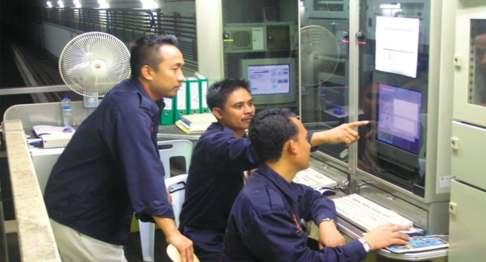
i. The function of a Data Acquisition System and Analysis System (DAAS).
ii. Collects measurement data from the instrumented channels in the model test set-up.
iii. Stores the measured information and performs the preliminary analysis.
iv. Offers real time on-screen information.
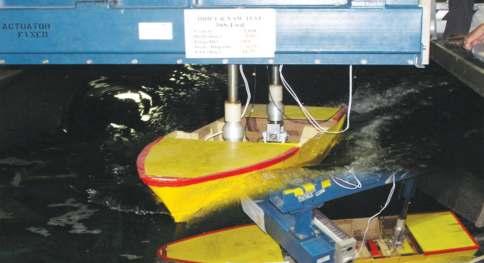
The Planar Motion Mechanism (PMM) consists of two electromechanical actuators which can be mounted vertically or horizontally to the test frame of the carriage. The maximum stroke of each actuator is 600 mm. The applicable oscillation frequencies range from 0.02 Hz to 2 Hz,whereby up to 0.133 Hz the full stroke can be utilised.
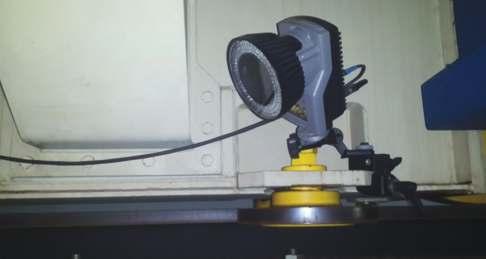
With optical motion capture technology, models remain completely unaffected by heavy sensors, hence even very small and light models can be used.Traditionally, this was accomplished with potentiometer systems attached to a model or with bulky and expensive gyroscopes and accelerometers. Tracking vessel motion under different wave, current or wind conditions, is a fundamental task at hydrodynamics lab or naval test site.This system offers an easy way to obtain accurate 3D and 6DOF position in realtime.

Models of paraffin wax, wood or foam materials can be machined by means of the ship model milling machine. The machine can also be used to accurately measure ship model.
The Computer-Aided Engineering Unit provides services

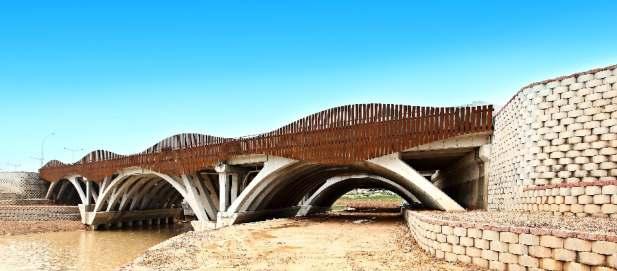

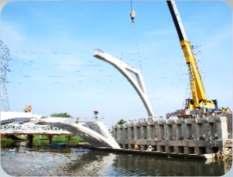



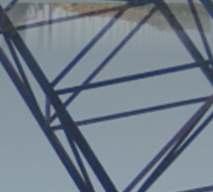

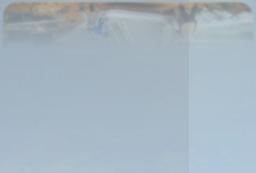


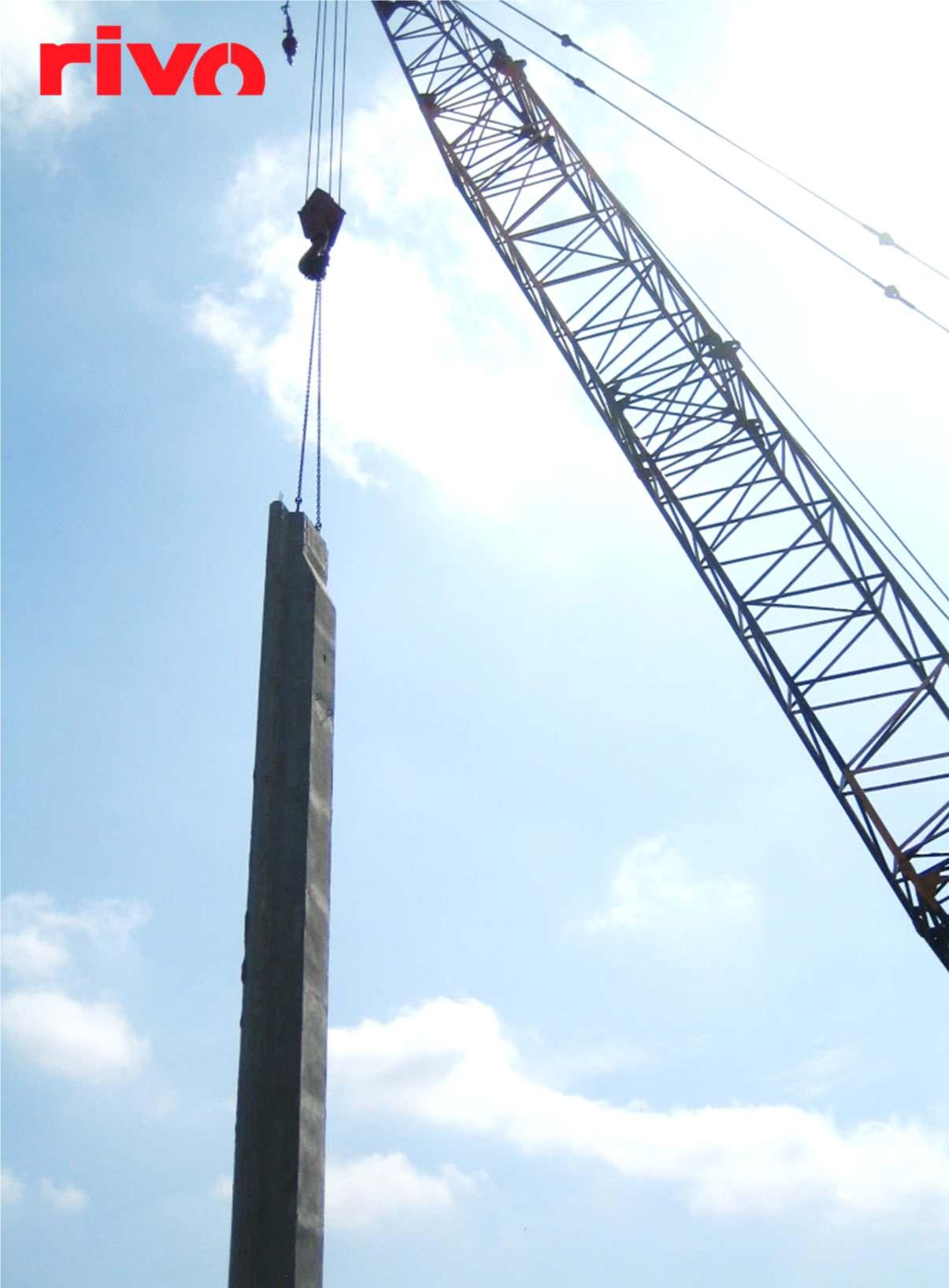

and facilities to foster the intelligent and efficient use the computing technologies in ship model testing at the MTC. This includes providing a variety of resources for researchers and students. CAE provides access to over 20 non-commercial design tools such as ship hydrodynamics and some commercial software. This software has been installed on two super workstations and can be accessed using wireless and wired communication throughout the MTC building.
On top of research, publication of research materials, services and supervision of post graduate students, MTC also provides short courses as part of continuing education programmes offered for the working community.They are:
i. Basic Hydrostatics and Stability.
ii. Ship Stability.
iii. Ship Structure and Strength Analysis.
iv. Ship Resistance and Propulsion.
v. Freeboard andTonnage Calculations.
vi. Ship Drawing.
vii. GRP Boat Construction.
viii. Damage Stability.
ix. Ship Design.
x. Ship Constructions Process.
xi. Contract Management for Engineers.
xii. Small Craft Survey.
xiii. Small Craft Design.
xiv. Small Boat Repair and Maintenance.
The following are some global players which have collaborated with MTC.
i. Marine Department Malaysia.
ii. Boustead Heavy Industries Corporation Sdn.Bhd.
iii. Kiswire Sdn.Bhd.
iv. Petroleum Geo-Services.
v. Shell Malaysia.
vi. BureauVeritas,France.
vii. MISC Berhad,Malaysia.
viii. Lloyd’s Register,London.
ix. Technip,Malaysia.
x. Lembaga Pelabuhan Johor,etc.
A number of consultancy works have been carried out at MTC (seeTable 1).
Tension Leg PlatformMotion
18M Cathedral Hull & 20M Catamaran Resistance and Seakeeping
18M Cathedral HullVessel Resistance and Paint Smear
OBM (Honda GX390) Thrust &Torque
16oFT Jack UpVessel Resistance in Wave
MTC has, in the past, received a number of local and foreign visitors for MOUs or collaboration.They are:
i. Kobe University,Japan.
ii. Monash University,Malaysia.
iii. University of Indonesia.
iv. IDEC,Hiroshima University,Japan.
v. UniKL MIMET,Malaysia.
vi. University of Khartoum,Sudan.
vii. InstituteTeknologi Surabaya (ITS).
viii. Australian Maritime College,University ofTasmania.
MTC will still be around as the preferred provider of marine hydrodynamics facilities in the country for years to come. It will go global, given sufficient support in term of space, time,finance and recognition.
In future, more foreign post-graduate students will be attached to MTC for more challenging research and journal publications.
MTC will expand its development in other areas of research if it can be equipped with more facilities such as cavitation tunnel and manoeuvring basin.
Author's Biodata
The Institution of Engineers Malaysia (IEM) is a learning institution that provides networking opportunities and platforms for Malaysian engineers to obtain local and global exposure. With respect to international opportunities, IEM is the secretariat for the ASEAN Engineering Register, APEC (Asia-Pacific Economic Cooperation) and International Professional Engineer Register. This position provides a unique opportunity to promote Malaysian engineering products and services worldwide.
One recent prospect for IEM to promote Malaysian engineering services and products to a wider engineering fraternity was its collaboration with Malaysia External Trade Development Corporation (MATRADE) in the Conference of ASEAN Federation of Engineering Institutions (CAFEO 36), which saw 10 companies associated with IEM members, participating as delegates.
The 2018 conference edition was organised around two distinct themes, ‘Engineering Rail Connectivity’ and ‘Fostering Excellence in Engineering Education’.This event provided a platform for cooperation amongst member countries to build engineering capacity and excellence across ASEAN and the Asia Pacific region. CAFEO 36 attracted about 1,000 participants from the government sector,engineeringorganisations,railownersandoperators, engineering deans, academics, leaders of accreditation bodies and industry and solution providers from nearly 30 countries around the world.
The MATRADE-IEM partnership in jointly managing the Export Acceleration Mission (EAM) on Engineering Services to Singapore in conjunction with 36th CAFEO,took place on

11-14 November,2018.The mission was led by Datin Rusiah Mohamed, MATRADE’s Director of Construction & Business Services and was coordinated by both Nur Fatihah Anis and MATRADE’s Southern Regional Director, Encik Zuaziezie Zulkifli. IEM’s support team came from AER Exco members, firmly backed by the IEM Vice President, ASEAN Engineers Register (AER) Ir. Prof. Dr Norlida Buniyamin, who is also the AER Commissioner.
The broad objective of the EAM is to assist Malaysian Service Providers (MSPs), specifically in the field of engineering to increase exports of Malaysia's services as well as to brand and promote Malaysian engineering capabilities in the ASEAN region.The mission also served to gather insights on the export potential in Singapore.
The EAM provided multiple opportunities to promote Malaysian engineering products and services, as other than showcasing Malaysian engineering expertise at a trade show setting under a Malaysian pavilion, the EAM also provided technical visits to Singapore’s Building & Construction Authority and to M+S Pte Ltd (the project owner for DUO & Marina One),as well as targeted individual business pitching and one-on-one business matching sessions.
Opportunities for networking was on-going throughout the event, either through potential buyer visits to the Pavilion or business prospects provided by CAFEO 36 to promote the EAM during the conference. In the business pitching session,Malaysian delegates were given the stage to present their business proposals to foreign potential clients as well as to their own Malaysian mission members for potential future collaboration. The business matching sessions held on the other hand, were tailored sessions arranged by MATRADE for each individual company in the delegation. With the support from MATRADE, Malaysian SMEs (Small and Medium Enterprises) can advance and grow their businesses globally.
MATRADE services are not limited to trade promotion, event facilitation and coordination support. The national trade promotion organisation also provides commercial
assistance in the form of support facilities.For international trade missions, trade shows and conferences, eligible SMEs can obtain reimbursable matching grants under MATRADE’s Market Development Grant (MDG) on the approved cost of eligible claims, subject to current terms and conditions. IEM members are encouraged to register with MATRADE and learn more about the services offered. MATRADE’s website: www.matrade.gov.my is a good starting point. Jurutera will also help provide updates to members from time to time.
CAFEO EAM is just one of the many programmes that Malaysian engineering SMEs can participate together with MATRADE. There are many other opportunities out there.
One of the most interesting recent developments is Saudi Arabia’s new ruling that now allows 100% foreign ownership of engineering consultancy firms in KSA.
In light of Saudi Arabia’s ‘Vision 2030’ strategy, the country has allowed foreign investment in the field of engineering consultancy as of August 2017. Prior to this decision, engineering companies were established in the KSA under the form of a ‘professional company,’ required to be a ‘general partnership’ and governed by the Professional Companies Law.
Theestablishmentofaforeignengineering company was subjected to certain limitations and conditions, including the level of: (i) its ownership structure, requiring a minimum ownership shareholding participation of twenty five percent (25%) by a KSA licensed engineer; (ii) the required type of company being a 'general partnership', and (iii) the Ministry of Commerce and Investment along with the Saudi Council of Engineers being the only two authorities in charge of the licensing and incorporation, excluding Saudi Arabian General Investment Authority (SAGIA).
With the latest decision and with SAGIA being KSA's licensing authority for foreign investment, engineering companies are now able to operate in the KSA as a limited liability type of company. After a year of discussion and consultation, the Ministry of Commerce and Investment, as well as SAGIA has announced that they will now allow 100% foreign ownership of an engineering consultancy firm.
Inthisnewpolicy,someoftherequirements before the issue of a foreign investment license for 100% ownership include: The foreign engineering entity must have 10 years’ experience in the field of engineering consultancy and that the entity must already
be operating in at least four (4) international markets, not includingtheKSA.Thepolicyappearstofavourmultinational firms with strong international track experience and this is reasonable, as the KSA wants to ensure the quality of new entrants.This does not mean that all hope is lost for smaller firms,as SAGIA has the prerogative to waive this condition if they consider the entrant’s presence in the country to be in the best interests of the kingdom.
This market liberation offers fresh opportunities for IEM members to explore work projects in KSA. Members can approach MATRADE for assistance to explore and pursue potential in Saudi Arabia or any Middle Eastern economy.
IEM continues to collaborate and actively partner with MATRADE and future projects planned for 2019 include organising a strong Malaysian participation at CAFEO 37 in Jakarta, Indonesia, on 11-14 September, 2019. Interested IEM members are advised to keep a keen look-out for announcements and future updates on this collaboration and possibly many more with MATRADE. Together, let’s go global!

Does your mentor really inspires you?
ECD Committee is searching for the 5 Top Mentors who inspire, highly professional and have gone the extra mile to make you a Professional Engineer


Nur Syazana Mohd Shahib
“Adetailed understanding of the weather is fundamental to the planning and success of a project. Reliable and timely availability of the metocean data are invaluable to the offshore industry and can be vital in situations when response decisions need to be made swiftly."
Oil & Gas is a dominant force in current world energy production. Based on the 2018 Statistical Review of World Energy(1), it accounts for more than 50% of energy sources, with natural gas as the fastest growing source of energy in the recent years.With Paris climate goals on the horizon and renewable energy still facing uncertainties and challenges, man has turned to oil and gas for sustainable energy sources that require new discoveries and production, leaving ocean sustainability at stake.
Hence, advanced metocean knowledge and technology are extremely essential in oil and gas so that while we are working hard to meet the ever-growing demand of the energy hungry world, the well-being of our environment will be firmly safeguarded for our next generation.
“Met” comes from the word meteorology which means the study of the atmosphere and “ocean” is from the word oceanography,which is the study of the ocean.Metocean addresses meteorological and physical oceanographic matters which refer to the combined conditions of wind, waves and currents, which can affect a wide range of activities in offshore oil and gas operations.
METOCEAN CONCERNS
All offshore activities are affected by metocean conditions. The weather presents major risks to the development of an offshore field at every stage of an offshore facility’s lifecycle. Because of that, a detailed understanding of metocean conditions is needed at the areas of concern. As exploration by the offshore industry has extended its field of activities to deeper offshore areas (where metocean conditions are more extreme and challenging,the currents are stronger, the bathymetry is deeper and the wave and wind environments are rougher), a more thorough and
detailed study of the development areas is more important than ever.
In order to design and operate offshore installations in a safe and efficient manner, it is essential that good knowledge is available of the metocean conditions to which an installation may be exposed. Of greatest importance are wind,wave,current and tidal conditions at the location of installation.However,at some locations and for specific types of operations, other parameters (e.g. air and sea temperature,visibility and ice conditions) may also be important.
For design purposes,it is the metocean conditions that may occur in 100 years which may be required. In order to plan a weather sensitive offshore operation, it is the metocean conditions which may be expected to occur during the course of the operation,that are of interest.All in all, metocean data is needed at all stages of the lifecycle which include field acquisition, feasibility study, design, construction, installation, operation and maintenance as well as decommissioning.
The provision of high quality and reliable metocean data is fundamental to the success of marine projects.Daily (as well as extreme) conditions have to be taken into account to establish design conditions. The major significance of the use of metocean data in a project is to contribute to optimum design and efficient operations, while assisting with improved safety and reduced costs. “Under-design” of offshore structures may result in structural failure while “over-design” may result in excessive use of materials in fabrication. Therefore, it is important that the structure design guarantees conservatism of the metocean data used while optimising to reduce cost.
Likewise, marine operations also rely heavily on high quality statistical metocean data to predict available
weather windows.There is a wide range of causes that may pose potential incidents in an offshore operation.Squalls,extreme waves and tropical storms are examples of environmental conditions which may put operations safety at risk.To ensure a safe, efficient and cost-effective operation, it is essential to identify the best time to carry out specific weather-dependent offshore operations such as seismic surveys, offshore installations, drilling operations and heavy lifting.
On a large scale, the ability to accurately monitor and predict weather and oceanographic conditions can have great benefits such as avoiding loss of lives at sea,maritime accidents and pollution.
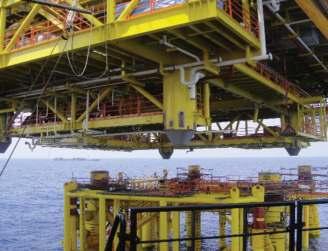
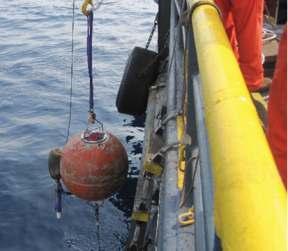
A large amount of metocean data is collected in situ by installing sensors at a fixedlocationonthefacilitieswithsampleddatarepresentedwithaGraphical User Interface (GUI). A complete WMS consists of both meteorological and oceanographic sensors with a processing system. The data can be accessed real time,and remotely from other places.
A vast range of equipment is available for collecting metocean data and the choice depends on the requirements of a project,which include duration, water depth and the location of the field. Standard sensors installed at the platforms are ultrasonic wind sensor (anemometer) which measures wind speed and direction,multi parameter meteorological sensor which measures barometric pressure,relative humidity and air temperature,wave radar which measures wave height, period and direction and Acoustic Doppler Current Profiler (ADCP)(2) which measures ocean current speed and at different layers of the water profile.
Asthesensorsdeliveron-the-spotupdatesinreal-time,thesemeasurements are essentially used to support on-site decision making during operations.
However, continuous data gathering also enables the analysis of shortand long-term trends of weather patterns which aids our understanding on global climate, which is vital in addressing pollution as well as to plan mitigation activities.



We are a supplier of high quality geosynthetic products used for soft soil stabilization, slope reinforcement, coastal erosion protection, river bank protection, landfills, drainage, road and railway construction.
Our Products:
NEXTILE NON-WOVENS
NEXGRID GEOGRIDS
We also provide design, specification, bill of quantities, cost estimate and drawings free-of-charge.



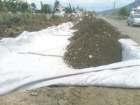
NEXFORCE HIGH-STRENGTH WOVENS

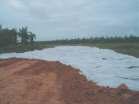


Get in touch with us: Tel: 03-6142 6638 Fax: 03-6142 6693
sales@neusynthetics.com
Sales Team:
For further information on our range of geosynthetics products, please contact:
Lee Hui Seng : 012 355 9151 : 012 329 3378 (Whatsapp only) Gordon Teh : 012 355 0872
Lee Hui Seng (012-3293378) Fazrol (012-3163341)
Tel : 603 6142 6638
Fax : 603 6142 6693
NEHEMIAH GEOSYNTHETICS SDN BHD 45-3 Jalan PJU 5/20, The Strand, Kota Damansara, 47810 Petaling Jaya, Selangor Darul Ehsan.
Email : leehuiseng@nehemiahwalls.com
Email : enquiry@nehemiahwalls.com www.nehemiah-grp.com
Jalan PJU 5/20, The Strand, Kota Damansara, 47810 Petaling Jaya, Selangor Darul Ehsan Malaysia Former y Neusynthetics Sdn Bhd
As observation is the fundamental core to all metocean-related support, weather forecasts are also prepared, based upon information acquired via metocean observation systems.The data is fed as input to numerical weather prediction models, where local and global forecasts are generated. The weather forecast for up to seven days in advance can be provided with high precision.As these forecasts are vital for the planning of a project,especially during unfavourable weather conditions, good data input is imperative to ensure output data is accurately predicted.There is an old saying that says “garbage in, garbage out”; the forecasts can only be as good as the data received. A Nehemiah Group of Companies www neusynthetics com
Email : gordonteh@nehemiahwalls.com
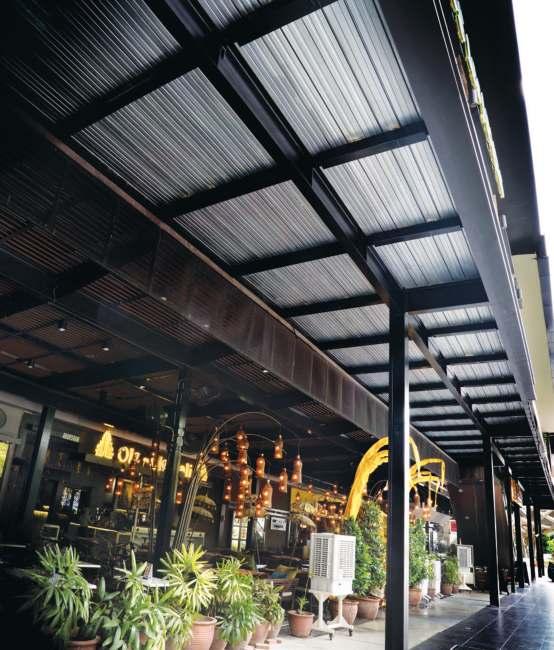
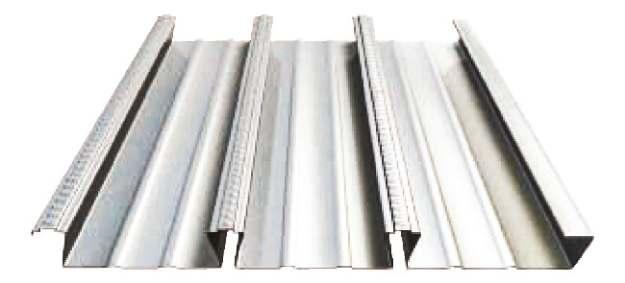


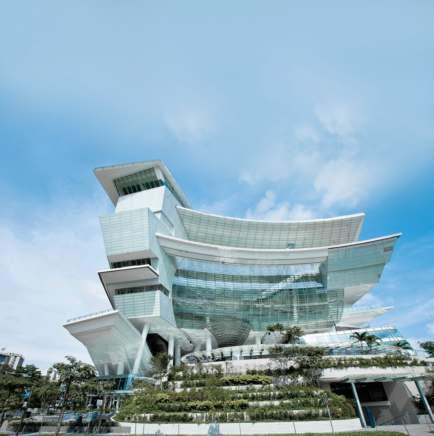
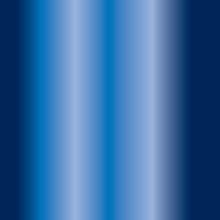






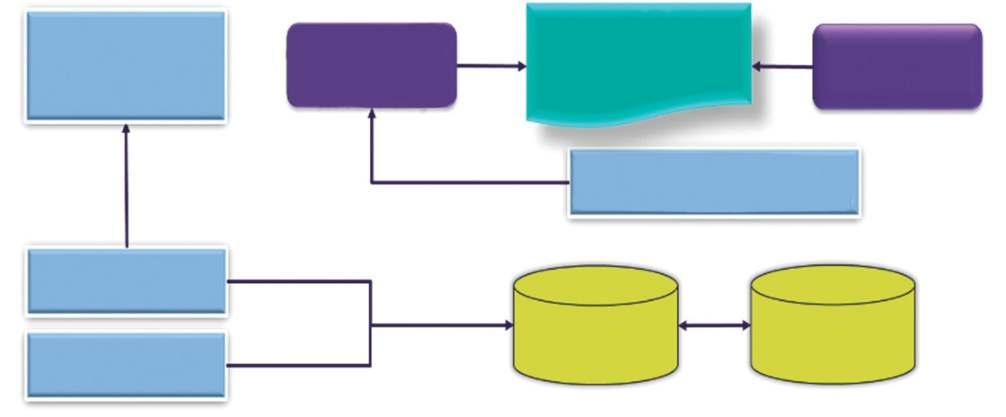
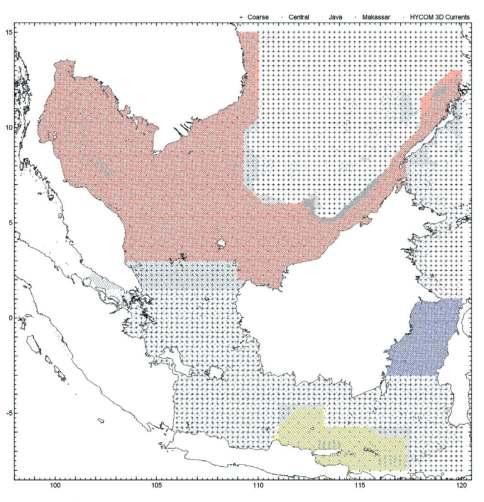
For producing more accurate and reliable forecasts, the recent advancement in weather forecast technology is the use of AI that is trained using deep learning model. The learning process ofAI is akin to that of a human,where a human will reason from past experiences and generalise into knowledge. AI does the same, but with the ability to process information at a higher dimension,by using more input parameters. However, without proper guidance, the learning process can be tainted or done in an inefficient manner.This is why experienced meteorological experts are needed to guide the development of the AI system (3)
Apart from in situ measured data, metocean data is also typically based on hindcasts, where atmospheric and ocean models are run for a historical period to develop
climate specification. SEAFINE (SEAMOS-South Fine Grid Hindcast)(4) is an example of a full-scale hindcast study that covers the South China Sea.The Joint Industry Project (JIP) is initiated by Oceanweather with the participation of various oil & gas players in the industry.This study is currently being used widely for data analysis, coupled and validated with the measured data for improved accuracy and consistency.
Meteorology and oceanography have a major impact on design and operations in all elements of the offshore industry. The ability to accurately monitor and predict weather, climate and oceanographic conditions can offer great benefits in offshore oil and gas operations.
From a business perspective, it is imperative that users of metocean information in the offshore oil and gas as well as marine renewable industries, are fully aware of the implications that the weather, waves, currents and water levels can have on their operations or design work. Experience has shown that if they are not, things can go wrong, with serious health, safety and economic consequences. Extreme weather at sea has become a stimulus for most oil & gas companies to improve the provision of Metocean data services.
An old seaman’s saying goes:“There is only one way to beat the weather – stay one step ahead of it”.Technology can now provide us with the greatest means to keep one step ahead of the weather.
[1] BP Statistical Review of World Energy, June 2018.
[2] Teledyne RD Instruments, www.teledyne.com.
[3] Akirakan Marine Technology Sdn. Bhd, weather@akirakan.com
[3] Oceanweather inc., www.oceanweather.com
Author's Biodata
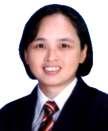
The evolution of the global marine coating market can be attributed to the continuous growth of the shipbuilding and offshore engineering industries in emerging economics. The market is expected to reach US$5.29 billion by 2022.
Nevertheless,increasing environmental regulations and the inconsistent price of the raw materials have proved to be major challenges for the global marine coating market.
Three major challenges – ice resistance, corrosion and fouling effects – need to be solved with respect to the cost of raw materials and the environmental regulations. In this matter, anti-corrosion, anti-ice and anti-fouling coatings dominate the industry (Figure 1). The United States and Japan are fulfilling 60% of the global needs in marine coating, apart from the contributions of The Netherlands, Norway,Denmark,and Germany.
Unlike other marine coatings, anti-fouling coating has a unique history in the evolution of the marine coating industry.It has been used since ancient times for ships and vessels,either to prevent fouling or to protect the wood from shipworms.A number of natural materials such as tar,wax or asphalt have been used for this purpose.The history of antifouling coating began with invention of an arsenic trisulfide and oil mixture (Figure 2).Due to the severe corrosion of the iron components in ships,lead sheathing was abandoned in the 17th century and copper was introduced for underwater practices of wooden ships.The development of iron ships in the 18th century saw various materials such as canvas, rubber, ebonite, paper, glass, cork, glaze, enamel, tiles and felt being used to prevent anti-fouling (Figure 3).
To prevent corrosion, the isolation technique was introduced between iron and copper layers. Plain brown paper, rubber, felt and cork soaked in tar were also used for Isolation purposes.The invention of wooden sheathing in the 19th century was found to be not only compatible with copper sheathing but also cost effective.The evolution of anti-fouling coating began with an invention of biocidestoxic compounds incorporated with paints in the middle
of the 19th century.This coating system was amalgamated with anti-foulants such as copper oxide, arsenic and mercury oxide. Meanwhile the solvents were mostly turpentine oil, naphtha and benzene. Finally, the binders were linseed oil,shellac varnish and tar.These systems were

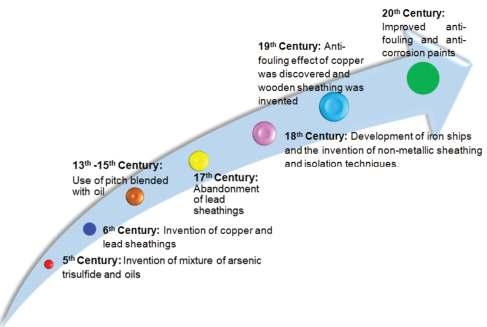


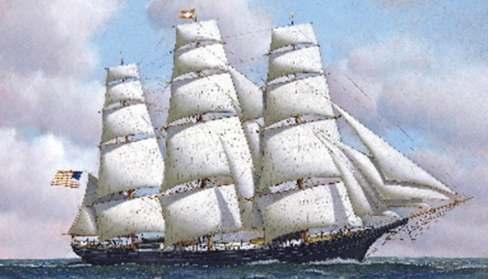
very expensive and had a short lifespan. The improved versions of these systems were developed in the early 20th century by changing the anti-foulants and solvents or were embedded with other biocide-additives.

In the 21st century, experts headed in other directions, which were environmental regulations, eco-friendly compounds and cost effective materials. Since 2008,

all tributyltin (TBT) and triorgonotin derivatives based anti-fouling coatings on ships and vessels were banned worldwide because of toxicity and the bioaccumulation of tin observed in some marine organisms.
The demand for oil and gas is increasing in tandem with ongoing urbanisation and industrialisation.This,in turn, has fuelled the demand for large cargo vessels in the Asia Pacific region.
The evolution of green technology in the anti-fouling coating market has also continuously increased and is projected to reach US$5.29 billion by 2022 (Figure 4). The new era of the marine coating starts with respect to biocide-released (Figure 5) and non-biocide released base anti-fouling coating approaches.
Source:Scienceofthetotalenvironment Vol., 650, Part 2, 2499, 2019

The Asia Pacific region is expected to lead the marine coating market, owing to increased shipbuilding activities in emerging economies such as China, India and South Korea. A ship is composed of 90% steel. It is estimated that approximately 25% of the world’s steel production is destroyed by corrosion,in other words,5 tons per second.
Anti-corrosion coating is a highly expected marine coating segment as this enhances the quality of structures or surface.The coating isolates the surface from aggressive corrosive agents including acids, salts and moisture. Among the resins available, epoxy resin is widely used for coating purposes, not only in the shipbuilding industries but also in offshore engineering due to its anti-corrosive and mechanical properties.
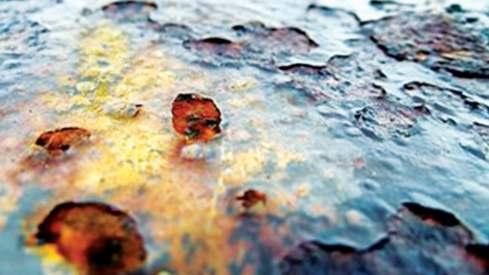
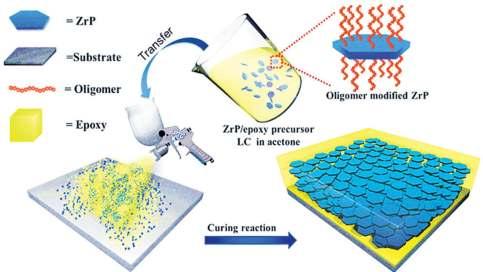

Epoxy marine coating can prevent corrosion in parts of ships that are continuously exposed to ultraviolet (UV) rays and seawater. The major challenge is that the industry is aiming for zero defects and zero failures but 85% of coatings fail within the first three years of service.
Anti-ice or ice resistant coating was developed to solve challenges such as operating in ice,abrasion resistant and friction resistant. On the other hand, the ice-class market estimates that the Arctic region has 22% of the world’s available oil and gas.
The focused areas of this region – such as Baltic, Northern Russia and Sakhalin Island – are estimated to hold approximately 90 billion barrels of oil and 1,500 trillion cubic feet of natural gas. Therefore, the development of anti-ice marine coating is expected to solve the challenges.
Operating on Ice:The ice-class market faces challenges including:
• Extreme low temperatures.
• Ice adhesion to the outside shell.
• Severe abrasion.
Abrasion: Ice can easily damage and detach coatings.
• Corrosion cells will form rapidly to attack unprotected steel.
• Increased O2 solubility in cold water.


Ice adhesion:
• Adds weight and impedes stability.
• Unsafe environment.
• Anti-fouling coatings are dominated by the global marine market. This is due to the increase in ship repairs and maintenance activities, consumption of commercial vessels, passenger ships, yachts and cargo as well as a growing demand from the oil & gas industry.
• The global marine coatings market is segmented into North America,Europe,South America,Asia-Pacific and Middle-East. China accounts for the largest share of marine coatings in the Asia-Pacific region.
• The technological advances, lower costs and artistry levels of the marine coating industry will dominate the global marine coating market.
Author's Biodata
Ir. Assoc. Prof. Dr Ching Yern Chee has over 18 years’ experience in Materials Engineering and Polymer Technology in both industry and academia. She has published over 78 research articles in various ISI/WoSand Scopus-listed publications.
Authorised Publisher: The Institution of Engineers, Malaysia (IEM) -
Explore our full set of Professional and Integrated PUBLISHING MANAGEMENT SERVICES:
» Project Management
» Creative Management
» Ad Space Management
» Mailing Management
» Print Management
• Annual Reports
• Booklets • Brochures
• Buntings • Business Cards
• CD / DVD Replications
• Calendars • Cards & Invitations
• Certificates • Custom Printings
• Envelopes • Folders
• NCR Bill Books • Notepads
• Leaflets • Le�erheads
• Paper Bags • Posters
• Stickers • Others
Dimension Publishing Sdn Bhd (449732-T)
Level 18-01-02, PJX-HM Shah Tower, No. 16A, Persiaran Barat, 46050 Petaling Jaya, Selangor Darul Ehsan, Malaysia.





















Shirley Tham : +6016 283 3013Joseph How : +6011 1234 8181








































































































































Tel: +603 7493 1049 Fax: +603 7493 1047 E-mail: info@dimensionpublishing.com



















A C&S and M&E Consultant firm established in 1992 is seeking competent and enthusiastic engineers to join as Partners and Directors.
Those interested to please apply to email address: advert570420@gmail.com







We are pleased to inform that IEM will be holding the 60th Annual Dinner and Awards Night 2019 on 20 April, 2019. Dimension Publishing has been appointed to put together the Annual Dinner Programme Book which will be circulated to all 1,200 guests on that night at Sunway Resort Hotel & Spa, Petaling Jaya
It is an annual event organised by IEM to present awards to winners of projects and to announce the new committee for year 2019/2020. Special guests of honour will be invited to officiate at the event.
We are now calling for interested advertisers to book their preferred advertising position in this programme book. Below please find the advertising rates for your immediate action and reply. We hope to hear from you soon before the closing date on 20 March 2019


Book Size: 210mm(W) x 285mm(H). Please provide extra 6mm for bleed area on all 4 sides
Printing Specifications : 230gsm art card (Cover), 105gsm art paper (Text), 4C + 4C, Staple binding, UV varnish on Cover
Quantity: 1,200 copies
Advertisement Format : High resolution PDF file, with crop marks, bleed area, text being outlined
Deadlines : : 20 March 2019 (Wed) (Ad Booking) 1 April 2019 (Mon) (Artwork Submission)
Kindly tick in the relevant bracket. IEM reserves the right to edit, revise or reject any advertisement deemed unsuitable or inappropriate. The final print-ready artwork to be furnished by advertisers.
Facing Inside Back Cover2,800
Run-On-Page (ROP)1,900
Double Page Spread (DPS)4,500
Remarks:
• Space availability is subject to booking on first-come-first-served basis
• Prices shown above exclude 15% Advertising Agency commission
• Please note that the above prices will be subjected to SST
• Any cancellation after signing the Advertising Contract shall result in a 50% penalty charge
• Payment term: 14 days upon invoicing
Name of Company:
Company Stamp & Authorized Signature:
Date:
Contact Person(s):
Email Address:
Company logo will be appeared in the Acknowledgement Page in both IEM Dinner Programme Book and JURUTERA May 2019
For advertising enquiries, please contact:
(449732-T) Level 18-01-02, PJX-HM Shah Tower, No. 16A, Persiaran Barat, 46050 Petaling Jaya, Selangor. Tel: +603 7493 1049 Fax: +603 7493 1047 Email: info@dimensionpublishing.com www.dimensionpublishing.com
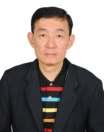

Tanjung Tualang Tin Dredge, also known as TT5, is located at Batu 5, Jalan Tanjung Tualang, Batu Gajah, Perak.The floating tin mine and factory was made in England in 1938 by F.W Paynes & Son for Southern Malayan Tin Dredging Ltd.
It weighed 4,500 tons and was supported by a pontoon measuring 75m long, 35m wide and 3.1m deep. The original coal-fired steam engine was, in 1963, replaced by an electric engine with an output of 2,247 hp and
dredging capacity of 358,000 cubic metres.
After operating for 44 years,TT5 was decommissioned in 1982 due to high operating costs and the falling price of tin. The front part of TT5 comprises 115 buckets, each weighing 2 tons.These were used to scoop up soil and an oscillating drum extracted the tin ore.The waste material was discharged at the rear via chutes. In 2015, the Perak government took over and restored TT5, dedicating it to the tin mining heritage of Perak.

reported by



On 20 December, 2018, the IEM Marine Engineering & Naval Architecture Technical Division (MNATD) and Electrical Engineering Technical Division (EETD) jointly organised a technical visit to Boustead Naval Shipyard (BNS) in Lumut.
The focus was on the electrical system on board a ship. The group of 13 participants left Bangunan Ingenieur, IEM, for Lumut at 9 a.m. Upon arrival at 12.15 p.m., they were treated to lunch hosted by BNS. At 2.00 p.m., there was a safety briefing,followed by a brief lecture by Ir.Lau from BNS, on the electrical installation system on a Royal Malaysia Navy Littoral Combat Ship.The characteristics of a typical electrical installation are as follows:
1. 3 phase,440 V,60 Hz
2. 3 phase,230 V,60 Hz
3. 1 phase,230 V,60 Hz
4. 3 phase,115 V,60 Hz
5. 24 VDC
3 phase, 440 V, 60 Hz is meant to power huge loads such as submersible pumps whereas 1 phase 230 V is typically meant for smaller loads such as internal lighting and pantry area. The design concept of electrical installation on ships is as follows:
1. The first step is estimating the total power requirement and this is usually estimated based on a sister ship of similar performance requirement.
2. The second step is to come up with the 3-stage conceptual design on main power requirement which typically should cover power requirement for plain sailing on hotel facilities, safety of life at sea (SOLAS), navigation, communication, manoeuvrability, defence station (powering up to be ready to combat) and action station (actual firing for combatting).All of these should take up about 85% of the total load demand.
3. Finally, the requirement for emergency power supply should be at least sufficient for the ship to safely return to the harbour.
This Littoral Combat Ship (LCS) is powered by 4 diesel generators rated at 790kW and 1800 rpm. On the other hand, the emergency diesel generator is rated at 323 kW and 450 V. Another consideration is the cables arrangement. Factors such as height and width of cable tray,vertical and horizontal displacement are crucial.
After the lecture, the participants visited the naval shipyard.The first stop was at the ship assembly area where they were briefed on the parts and construction processes of the LCS. The participants were also shown around the facilities and complexes within the shipyard compound. The final stop was at the weaponry room where participants were shown the controls of a ship gun.The visit concluded with an exchange of tokens between IEM and BNS.
Yes! I would like to be a subscriber of The Institution of Engineers, Malaysia’s publications
Name: _________________________________________________________________________________________________________
Mailing Address:_________________________________________________________________________________________________
Country: ________________________
Company/Institution:______________________________________________________________________________________________
Title: ____________________________________________________________________________________________________
Telephone No: _________________________ Fax: _________________________ Email: _________________________________
Please commence my subscription from: _________________________(month/year) Signature: _______________________________
To start your subscription of IEM’s publications, complete this form and mail it back to the address below. For faster processing, fax it to: +603 7493 1047. Thank you.
What is your primary job title?
Corporate Management (including chairman, president, proprietor, partner, director, vice president, general manager, division manager, import/exportmanager,othercorporatetitle)
Management (including project/contract/equipment/service/transport districtmanager,clerkofworks,othertechnicaloroperatingmanager)
Engineering/Design (including chief engineer, chief designer, civil/ highway/mechanical/planningengineer,otherengineering/designtitle)
Buying/Purchasing (including chief buyer, buyer, purchasing officer, otherbuying/purchasingtitle)
Titles allied to the field (architect, consultant, surveyor, research and development professor, lecturer, supervisor, superintendent, inspector orotheralliedtitle)
Others(pleasespecify)____________________________
What type of organisation do you work in? (Tick one box only)
Contractor
Sub-contractorspecialist
Designandbuildcontractor
Consultingengineering/architectural/quantitysurveyingpractice
Mining/quarrying/aggregateproductioncompany
Petroleumproducer
International/nationalauthorities
National/regional/localgovernment
Publicutilities(electricity,gas,water,deckandharbour,other)
Manufacturer
Distributor/importer/agent
Constructiondepartmentoflargeindustrial/Commercialconcern
Association/educationestablishment/research
Constructionequipmenthire/rentalcompany
Project/constructionmanagementconsultancy
Others(pleasespecify)_______________________________
What are the main activities of your organisation? (Tick all that apply)
Constructions of: Manufacturer of:
Roads/bridges

Constructionequipment
Dams/reservoirs/irrigation Cement
Harbours/offshore structures Other construction materials
Foundations/tunnels Distribution
Pipelines/refineries Construction equipment
Structures/steelwork Constructionmaterials
Building(commercial,industrial) Hire/rentalofconstructionequipment
Housing Design
Constructionmanagement Earth-moving/opencastmining
Deepmining Aggregateproduction
Others(Pleasespecify)_________________________________________
Rate (Please tick)
RM360.00 -12issuesofJURUTERA
RM84.00 -2issuesIEMJournal(Half-yearly)
Terms and Conditions:
1) Thesubscriptionistobeprepaid.
2) Pleasemakechequepayableto Dimension Publishing Sdn. Bhd.
3) Subscriptionsarenotrefundable.
4) Magazine/swillbesenttothemailingaddressgiven.
5) Studentsareentitledfora20%discountfromtheabovesubscriptionrate.
6) Students must submit a photocopy of the student identification card together withthepayment.
7) Theaboverateisinclusiveofdeliverychargesandapplicablein Malaysiaonly.
8) Additionaldeliverychargeswillapplytooverseassubscribers.
For subscription enquiries, please contact +603-7493 1049 or email to info@dimensionpublishing.com

Ir. Dr David Chuah Joon Huang
Ir. Dr David Chuah Joon Huang serves in the IEM as a Council Member (ICT and Multimedia Representative) and also the Principal Journal Editor. He currently lectures at the Department of Electrical Engineering, University of Malaya and is Head of VIP Research Group.
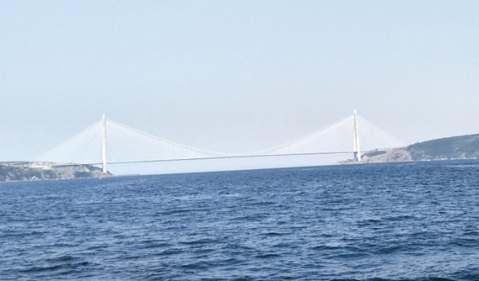

My 12-year-old son says he’s like the magnificent country of Turkey, which has a smaller part of its land in Europe (West) and the bigger part in Asia (East).He had spent a few years of his early childhood education in Europe and more years later in Asia. He occasionally feels as if he is standing between the two continents, metaphorically. His two siblings, however, had never lived in Europe, so to let them experience that same feeling, I brought my family on a trip to Turkey and to sail along the Bosphorus Strait,between the two continents.
Jetlag kicked in brutally on our arrival in Istanbul. But knowing that we were going sailing, my 3 young children woke up on time and quickly ate their breakfast, washed down with Aryan,a refreshingTurkish yoghurt drink.
The weather was fantastic as we walked to Besiktas Pier which was 10 minutes from our hotel and we boarded a ferry operated by Sehir Hatlari, for the 6-hour voyage. It cost us 25TL (equivalent to RM20) per adult for a 2-way ticket.Two of mychildrenwereunder6yearsofageandsocouldsailforfree.
The ferry started its way across the continents.Awed by the historical charm of the Strait,we literally lost track at times as to which continent we were on. Sailing past Ortokoy Mosque, we were completely hynotised by the baroque architecture. Built in the 19th century, it was formerly the Grand Imperial Mosque under Sultan Abdulmecid, ruler of Ottoman Empire.
Before we could see enough of Ortokoy Mosque, the BosphorusBridgecaughtourattention.Extendingacrossthe Bosphorus Strait, this six-lane bridge, 1,560m long, is one of three suspension bridges which connect Europe and Asia. It is the first bridge built across the strait and some 200,000 vehicles pass through it daily.
While enjoying the gentle breeze, we found ourselves at Rumeli Hisari or Rumeli Fortress, on the left side of the Strait. This medieval fortress is a hidden gem. Directly across the Strait is a sister fortress called Anadolu Hisari, one of the oldest standing Turkish structures.These two fortresses assisted the then 21-year-old Ottoman Sultan Mehmed II, fondly known as Mehmed the Conqueror,to occupy Constantinople (Istanbul),bringing a tragic end to the Byzantine Empire in 1453.This is commonly referred asThe Fall of Constaninople.
Then we saw the second bridge on our cruise. The eight-lane Second Bosphorus Bridge or Fatih Sultan Mehmet Bridge, was the 5th longest suspension bridge in the world when it was completed in 1988. Linking Hisarustu (Europe) and Kavicik (Asia),it is one of Istanbul’s best skyline constructions, with a height of 105m and a total length of 1,510m.
At Anadolu Kavagi, we could immediately smell the wonderful aroma from the seafood restaurants there. This small historical fishing village has only 2,000 inhabitants. Interestingly, this is said to be the point where Bosphorus meets the Black Sea. We took a 20-minute stroll to Yoros Castle (Yoros Kalesi) ruins. Located on a hill, this Byzantine castle offers a panoramic view of the Bosphorus Strait.
We had lunch at one of the seafood restaurants and the owner offered us complimentary Turkish tea which I could not resist.The mussels and calamari left us wanting more.
After lunch, we went to the town where the shops sold souvenirs at prices lower than that in Istanbul.After buying some clothing and purses, we rushed back to the pier to catch the ferry which then sailed south to a busier part of Istanbul.I could feel the urge to further immerse myself in the historical and cultural legacy of this beautiful city that had been able to withstand the test of time.
AstheferryapproachedKarakoy,wefellunderthecharm of GalataTower.Finally,we docked at Eminonu,the final stop, where we disembarked and continued our discovery of old Istanbul.
Kepada Semua Ahli,
Tarikh: 9 Januari 2019
Berikut adalah senarai calon yang layak untuk menduduki Temuduga Profesional bagi tahun 2018.
Mengikut Undang-Undang Kecil IEM, Seksyen 3.8, nama-nama seperti tersenarai berikut diterbitkan sebagai calon-calon yang layak untuk menjadi Ahli Institusi, dengan syarat bahawa mereka lulus Temuduga Profesional tahun 2018.
SekiranyaterdapatAhliKorporatyangmempunyaibantahanterhadap mana-mana calon yang didapati tidak sesuai untuk menduduki Temuduga Profesional, surat bantahan boleh dikemukakan kepada Setiausaha Kehormat, IEM. Surat bantahan hendaklah dikemukakan sebulan dari tarikh penerbitan dikeluarkan.
Ir. Mohd Khir bin Muhammad FIEM, PEng Setiausaha Kehormat, IEM (Sessi 2018/2019)
NamaKelayakan
KEJURUTERAAN AWAM
ALDRICH CHAN TSE KEENBE HONS (SWINBURNE) (CIVIL, 2011)
DAVE SINTIBE HONS (UTM) (CIVIL, 2013)
HASMADI BIN HAMIDBE HONS (UTM) (CIVIL, 2003)
IBRAHIM BIN ESABE HONS (UTM) (CIVIL, 1991)
NURULAIN HANINA BINTI MOHAMAD FODZI BE HONS (UTM) (CIVIL, 2008)
SIA KIE DINGBE HONS (SOUTH AUSTRALIA) (CIVIL & WATER, 2000) ME (ADELAIDE) (CIVIL & ENVIRONMENTAL, 2008)
SUFIYAN SAFWAN BIN ABDUL HAMIDBE HONS (UTHM) (CIVIL, 2010)
WAN FADLI BIN WAN MOHAMADBE HONS (UiTM) (CIVIL, 2001)
WAN RIZANA BINTI WAN MUHAMMADBE HONS (UTM) (CIVIL, 2006)
KEJURUTERAAN ELEKTRONIK
MOHD ZAIDI BIN NORDINBE HONS (UiTM) (ELECTRICAL, 2006)
KEJURUTERAAN GEOTEKNIK
GOH KOK BINGBE HONS (MALAYA) (CIVIL, 2008)
PERPINDAHAN AHLI
No. Ahli NamaKelayakan
KEJURUTERAAN AWAM
99359ASMA FARAH BT ISMAILBE HONS (UTP) (CIVIL, 2009)
41315AZRIZAN BIN MOHAMEDBE HONS (UiTM) (CIVIL, 2008)
50961 CHONG TECK NAN BE HONS (USM) (CIVIL, 2014)
94337JURY @ JERRY GUNGATBE HONS (UKM) (CIVIL & ENVIRONMENTAL, 1998)
76195 LAU ZI THIAM BE HONS (UMP) (CIVIL, 2014)
66827 LEONG CHORNG YI BE HONS (UTAR) (CIVIL, 2010) MSc (LONDON SOUTH BANK) (CIVIL, 2011)
48896LOH WEI LUNBE HONS (UMS) (CIVIL, 2010)
76836MOHD ZULKHALID BIN AFANDIBE HONS (MALAYA) (CIVIL, 2013)
72499NICKY WAI-LUN NGBE HONS (UKM) (CIVIL & STRUCTURAL, 2014)
37368NOR AZIZAH BINTI MOHAMMED RUM BE HONS (UTHM) (CIVIL, 2010)
45549OOI ZI XUNBE HONS (USM) (CIVIL, 2014)
96876RIDZWAN BIN ZAKARIAH BE HONS (UTM) (CIVIL, 2015) ME (UTHM) (CIVIL, 2018)
23350SITI SAIMAH BINTI ABDUL RAHMAN BE HONS (UiTM) (CIVIL, 2006) ME (UTM) (CIVIL-GEOTECHNICS, 2015)
38863YAP WERN YIAN, MICHAELME HONS (IMPERIAL COLLEGE LONDON) (CIVIL, 2009)
26818YAW SIEW KINBE HONS (UPM) (CIVIL, 2004)
93701ZURHIJJAS BIN RABIEEBE HONS (UNIMAS) (CIVIL, 2011)
KEJURUTERAAN ELEKTRIKAL
87049NAZMI BIN ZULKIFLI BE HONS (MALAYA) (ELECTRICAL, 2010) ME (MALAYA) (POWER SYSTEM, 2013)
KEJURUTERAAN ELEKTRONIK
60032MUHAMMAD SYAHIR BIN BADRUDDIN BE HONS (UPNM) (ELECTRICAL & ELECTRONIC (COMMUNICATION), 2012)
KEJURUTERAAN MEKANIKAL
43438CHU SOON HONBE HONS (MALAYA) (MECHANICAL, 2010)
KEJURUTERAAN STRUKTUR
50961 CHONG TECK NAN BE HONS (USM) (CIVIL, 2014)
PERMOHONAN BARU / PERPINDAHAN MENJADI AHLI KORPORAT
NamaKelayakan
KEJURUTERAAN KIMIA
28697LOH KWONG FEIBE HONS (UPM) (CHEMICAL, 2009)
KEJURUTERAAN ELEKTRIKAL
62002NAZARUDIN BIN NASSIRIBE HONS (UTM) (ELECTRICAL, 2010)
KEJURUTERAAN MEKANIKAL
13171JOHAN BIN ABDUL JALILBE (NEW SOUTH WALES) (MECHANICAL, 1989)




























































1 - Day Short Course on “Rainfallinduced Slope Failures: Analyses, Monitoring and Preventive Measures”
Date:5 March 2019 (Tuesday)
Time:8.30 a.m. to 6.00 p.m.
Venue:Four Points Hotel, Puchong
Approved CPD:7.5





Speakers:Professor Harianto Rahardjo





















2 - Day Course on “Advanced Project Estimation and Cost Control”
Date:5 – 6 March 2019 (Tuesday - Wednesday)
Time:9.00 a.m. to 5.00 p.m.
Venue:Wisma IEM
Approved CPD :14.5
Speakers:Mr. Robert Gan

Half Day Course on “Design, Selection And Improving Efficiency Of Precision Cooling System For New And Existing Data Centre”
Date:13 March 2019 (Wednesday)
Time:9.00 a.m. to 1.00 p.m.
Venue:Wisma IEM
Approved CPD :4
Speakers:Ir. Eric Chang
PERMOHONAN
MENJADI AHLI SISWAZAH No. Ahli NamaKelayakan
KEJURUTERAAN AERONAUTIKAL
101063ZAMARA BIN MUSTAPHA B.E.HONS.(UNI. OF LONDON) (AERONAUTICAL, 1989) M.Sc.(LELAND STANFORD JUNIOR UNI.)(1991)
KEJURUTERAAN ALAM SEKITAR
100676TEO PING JIE B.E.(WESTERN AUSTRALIA) (ENVIRONMENTAL, 2012)
KEJURUTERAAN ARKITEK
100676TEO PING JIE B.E.(WESTERN AUSTRALIA) (ENVIRONMENTAL, 2012)
KEJURUTERAAN AWAM
100899LO VUI KIONG, ALAN B.E.(QUT)(CIVIL, 2015)
101041MUHAMMAD ASYRAF BIN ROSLI
B.E.(UNI. OF NEWCASTLE) (CIVIL, 2014)
100828 YAP JUNE YONG B.E.HONS.(CURTIN UNI.)(CIVIL & CONSTRUCTION, 2017)
100673WAI KHAI LOONB.E.HONS.(CURTIN UNIVERSITY)(CIVIL & CONSTRUCTION, 2017)
100680HO KAE LUENB.E.HONS.(INTI INT. UNI.) (CIVIL, 2017)
101027TEO JUN KANGB.E.HONS.(IUKL)(CIVIL, 2017)
101031CHUA KIONG HING B.E.HONS.(KLIUC)(CIVIL, 2010)
101054SOON KIM HIOHB.E.HONS.(KLIUC)(CIVIL, 2011)
101020ASRIZAL BIN JASNI B.E.HONS.(MALAYA)(CIVIL, 2008)
99526 SU YEE LOONG B.E.HONS.(MALAYA)(CIVIL, 2012)
100682NAZMIR BIN ZULBADLI B.E.HONS.(MALAYA)(CIVIL, 2013)
100683MUHAMMAD SYAMIL BIN DZULFIDA B.E.HONS.(MALAYA)(CIVIL, 2014)
100716OI SIOK ZHENB.E.HONS.(MALAYA)(CIVIL, 2017)
101035CHEAH UI KEEB.E.HONS.(RMIT)(CIVIL & INFRASTRUCTURE, 2013)
100896 WAN AMIR HISYAM WAN ZAKARIAH
B.E.HONS.(RMIT)(CIVIL & INFRASTRUCTURE, 2013) M.Sc.(ICL)(SOIL MECHANICS, 2016)
100798LING DAOQIB.E.HONS.(RMIT)(CIVIL, 2013)
101053LIU SIE CHING, AMELIA
100894MELDA EPPAH ANAK MESA
B.E.HONS.(SWINBURNE UNI. OF TECH.)(CIVIL, 2011)
B.E.HONS.(SWINBURNE UNI. OF TECH.)(CIVIL, 2017)
100805 CHIN YIT YUNG B.E.HONS.(SWINBURNE UNI. OF TECH.)(CIVIL, 2017)
100781CHONG KET PING
100685MOHAMAD RAZMI BIN A. RAHMAN
99519AZRUL BIN ZULWALI KIFLI
100797 NOOR AZIZAH BINTI KADAR BAWA
100809FAZILA BINTI MD IDRIS
101023ZGYMERRO NOER LITAK
100718 NUR ANISA ATHIRAH BINTI ROSLI
101038 NUR AZRIEN BINTI ABDUL AZIZ
B.E.HONS.(THE UNI. OF QUEENSLAND)(CIVIL, 2011)
B.E.HONS.(UiTM)(CIVIL, 2009)
B.E.HONS.(UiTM)(CIVIL, 2009) M.E.(UNIMAS)(CIVIL, 2012)
B.E.HONS.(UiTM)(CIVIL, 2011)
B.E.HONS.(UiTM)(CIVIL, 2012)
B.E.HONS.(UiTM)(CIVIL, 2013)
B.E.HONS.(UiTM)(CIVIL, 2017)
B.E.HONS.(UiTM)(CIVILINFRASTRUCTURE, 2017)
101036CHUAH RUN ENB.E.HONS.(UKM)(CIVIL & ENVIRONMENTAL, 2015)
100882MOHD NAZRI BIN NGAH
100878AMALL RAIHAN BINTI ABDUL RAZAK
101017LIM JIA JUN, OWEN
101022 YAPP WEI TING, WESLEY
B.E.HONS.(UNI. OF BRISTOL)(CIVIL, 2014)
M.E.(UNI. OF MELBOURNE) (STRUCTURAL, 2016)
101052LIM WEE MINGB.E.HONS.(UNI. OF LEEDS)(CIVIL & ENVIRONMENTAL, 2016)
M.Sc.(UNI. OF LEEDS) (ENVIRONMENTAL & PROJECT MANAGEMENT, 2017)
101050MA CHI HANGB.E.HONS.(UNI. OF SOUTHAMPTON)(CIVIL, 2010)
100826 KOAY JYE YUEH
100790YONG LEONG KONG
100829CHAN KHIN THUNG
100670AHMAD NAJMUDDIN BIN ABDUL HAMID
100669AUNI MAHSURI BINTI ZABUDIN
101064LIM CHUI MUN, MICHELLE
99521MOHAMMAD FAKHRI BIN AZIZ
100929ANG CHUNG CHERN
100928 AU YOUNG WENG LONG
M.Sc.(UNI. OF SOUTHAMPTON)(CIVIL, 2012)
B.E.HONS.(UniMAP)(CIVIL, 2017)
B.E.HONS.(UNIMAS)(CIVIL, 2012)
B.E.HONS.(UNITEN)(CIVIL, 2003)
B.E.HONS.(UNITEN)(CIVIL, 2015)
B.E.HONS.(UNITEN)(CIVIL, 2017)
B.E.HONS.(UNITEN)(CIVIL, 2017)
B.E.HONS.(UNITEN)(CIVIL, 2017)
B.E.HONS.(UTAR SG LONG) (CIVIL, 2018)
B.E.HONS.(UTAR SG LONG) (CIVIL, 2018)
100918LIAN WEI KANGB.E.HONS.(UTAR SG LONG) (CIVIL, 2018)
100915LIM JACK HOONG
100908 TAN WEI YEE
B.E.HONS.(UTAR SG LONG) (CIVIL, 2018)
B.E.HONS.(UTAR SG LONG) (CIVIL, 2018)
100904WILLIP LIMB.E.HONS.(UTAR SG LONG) (CIVIL, 2018)
100901YONG VUI FAH, NELSON
100820CHEN WEI HANG
100817 LOW ZE YANN
100808MOHD KHAIRUL NAJMI BIN MOHD KAMARUDIN
101059NOOR BAYZURA BINTI MOHD KASHIM
100810HAYTHEM MOHSEN MOHAMMED
100695MOHD IDRUS BIN DIN
100715 WONG TSUEY FEN
100687NUR MOHD FAIRUS BIN ABDULLAH
100780WAN MOKHTAR BIN WAN ISMAIL
100666DR. NORHIDAYAH ABDUL HASSAN
100895UMMI KALTHUM BINTI ISMAIL
100679IZAM ZAIRIE BIN ISHAK
100782NUR IZZATI BINTI ABDUL AZIZ
B.E.HONS.(UTAR SG LONG) (CIVIL, 2018)
B.E.HONS.(UTAR)(CIVIL, 2011)
B.E.HONS.(UTAR)(CIVIL, 2018)
B.E.HONS.(UTHM)(CIVIL, 2006)
B.E.HONS.(UTHM)(CIVIL, 2011)
B.E.HONS.(UTM)(CIVIL, 2013)
B.E.HONS.(UTM)(CIVIL, 1987)
B.E.HONS.(UTM)(CIVIL, 1998)
B.E.HONS.(UTM)(CIVIL, 2001)
B.E.HONS.(UTM)(CIVIL, 2003)
B.E.HONS.(UTM)(CIVIL, 2005)
M.E.(UTM)(CIVILTRANSPORTATION & HIGHWAY, 2007)
PhD.(NOTTINGHAM)(2013)
B.E.HONS.(UTM)(CIVIL, 2010)
B.E.HONS.(UTM)(CIVIL, 2011)
B.E.HONS.(UTM)(CIVIL, 2011)
M.Sc.(MALAYA)(PROJECT MANAGEMENT, 2017)
101060TAN BOON KAIB.E.HONS.(UTM)(CIVIL, 2012)
99525LAU HUI HIE
100804HAMID MANSOOR ALI BADY
B.E.HONS.(UKM)(CIVIL & STRUCTURAL, 2006)
B.E.HONS.(UKM)(CIVIL & STRUCTURAL, 2008) M.E.(UTM)(CONSTRUCTION MANAGEMENT, 2018)
B.E.HONS.(UMP)(CIVIL, 2015)
100871AZROL EFFENDI BIN MOHAMAD
100803PERWIRA BIN KHUSAIRI RAHMAN
101033UMMU NAJWA BINTI LADZIM
100885 MAS ELINA BINTI CHE JAMIL
B.E.HONS.(UTM)(CIVIL, 2016)
B.E.HONS.(UTM)(CIVIL, 2016)
B.E.HONS.(UTM)(CIVIL, 2017)
B.E.HONS.(UTP)(CIVIL, 2008)
100788WONG CHOON HWA B.E.HONS.(UTP)(CIVIL, 2017)
100822 NURULAFIQAH BINTI MOHAMAD ARBA'I B.E.HONS.(UTP)(CIVIL, 2017)
100668TEO SZE MENGB.Sc.(SOUTH DAKOTA STATE UNI.)(CIVIL, 1999)
100784ABDUL RAZAK BIN ABDUL LATIP B.Sc.(THE UNI. OF ALABAMA) (CIVIL, 1987)
100721TEOH SHENG LIM.E.(THE UNI. OF MELBOURNE)(CIVIL, 2017)
101049NG ZHAO LUNM.E.HONS.(THE UNI. OF NOTTINGHAM)(CIVIL, 2018)
100870 SAW YONG XIANG M.E.HONS.(THE UNIVERSITY OF SHEFFIELD)(CIVIL, 2015)
KEJURUTERAAN BAHAN
101058YAP HUI CHEK B.E.HONS.(USM)(MATERIALS, 2009)
KEJURUTERAAN BIO-MEDICAL
101032 LEE CHING YEE B.E.HONS.(UTAR)(BIOMEDICAL, 2015)
KEJURUTERAAN ELEKTRIKAL
100815DR. SATHIABAMA T. THIRUGNANA B.E.(NAGAOKA UNI. OF TECH.)(ELECTRICAL & ELECTRONIC SYSTEMS, 2000) M.E.(NAGAOKA UNI. OF TECH.)( ELECTRONIC, 2002) PhD.(WASEDA UNI.)(2015)
100697 MOHD TARMIZI BIN SALIM B.E.(UMP)(ELECTRICALPOWER SYSTEMS, 2009)
100723 LEOW HAN YOU B.E.HONS.(CURTIN UNI. OF TECH.)(ELECTRICAL POWER, 2016)
100665LEE CHEE LEONG B.E.HONS.(LIVERPOOL JOHN MOORES UNI.) (MICROELECTRONICS, 2007) M.E.(UTAR)(ELECTRICAL, 2017)
100827NURUL SHUHADA BINTI PAUZAI
B.E.HONS.(MALAYA) (ELECTRICAL, 2014)
100663SAN WEI JIANB.E.HONS.(MALAYA) (ELECTRICAL, 2017)
100792WONG JIN WEI, DANIEL B.E.HONS.(SWINBURNE UNI. OF TECH.)(ELECTRICAL & ELECTRONIC, 2016)
100872 WONG SZE YEE, HANNAH B.E.HONS.(SWINBURNE UNI. OF TECH.)(ELECTRICAL & ELECTRONIC, 2016)
100877DR. NURFADZILAH BINTI AHMAD
100821MOHD FADZLI BIN MOHD NOOR
100791MUHAMMAD HAFIZ BIN ISMAIL
100698MUHAMMAD ASYRAFF BIN SURTAN ADAM
100720GOH CHONG HEEN
100795KUMARHESHAN VELLIAN
B.E.HONS.(UiTM) (ELECTRICAL, 2010) PhD.(UiTM)(ELECTRICAL, 2015)
B.E.HONS.(UiTM) (ELECTRICAL, 2013)
B.E.HONS.(UiTM) (ELECTRICAL, 2016)
B.E.HONS.(UiTM) (ELECTRICAL, 2017)
B.E.HONS.(UKM)(ELECTRICAL & ELECTRONIC, 2012)
B.E.HONS.(UMS)(ELECTRICAL & ELECTRONICS, 2008)
B.E.HONS.(UTM)(CIVIL, 2012)
M.E.(UTM)(CIVIL-STRUCTURE, 2013)
B.E.HONS.(UTM)(CIVIL, 2013)
101045MOHD HAFIS BIN AHMAD
100879DAING MOHD HAFIZI BIN KHAIRI
100660 EDRI AZLAN BIN MOHD AZNAN
B.E.HONS.(UTM)(CIVIL, 2014) MPM.(UTM)(PROJECT MANAGEMENT, 2017)
B.E.HONS.(UTM)(CIVIL, 2015)
B.E.HONS.(UTM)(CIVIL, 2015)
101044LIONEL JOSLINB.E.HONS.(UMS)(ELECTRICAL & ELECTRONICS, 2009)
100696MUHAMMAD IZZAT LUQMAN BIN SHAHDAN
101055INTAN FAZLINA BINTI YAHAYA
100900MOHAMAD ZULFADLI BIN ABDOL HALIM
100876MOHAMMAD FARHAN BIN HALIM
B.E.HONS.(UNI. OF WOLLONGONG)(ELECTRICAL, 2016)
B.E.HONS.(UniMAP) (ELECTRICAL SYSTEM, 2009)
B.E.HONS.(UniMAP) (ELECTRICAL SYSTEMS, 2012)
B.E.HONS.(UniMAP) (ELECTRICAL SYSTEMS, 2013)
101002RAM SURENDRA PRAKESH
B.E.HONS.(UNITEN) (ELECTRICAL & ELECTRONICS, 2009) MEM.(UPM)(ENGINEERING, 2011)
100887MOHAMAD
SHAHID BIN
SUHAIMI
100785ASHWINIKA KUMARAN
100819MOHAMMAD NURZAKWAN BIN NORAYEEN
99530MUHAMAD KHAIRI BIN MOHD KHALID
101025 SAKTHIVELA/L GANESON
B.E.HONS.(UNITEN) (ELECTRICAL & ELECTRONICS, 2016)
B.E.HONS.(UNITEN) (ELECTRICAL & ELECTRONICS, 2017)
B.E.HONS.(UNITEN) (ELECTRICAL POWER, 2011)
B.E.HONS.(UNITEN) (ELECTRICAL POWER, 2012)
B.E.HONS.(UNITEN) (ELECTRICAL POWER, 2015)
101056MADHU SUTHARN RAJENTHRAN B.E.HONS.(UNITEN) (ELECTRICAL POWER, 2016)
100867ADAM BIN
ZAINUDIN SABAI
B.E.HONS.(UNITEN) (ELECTRICAL POWER, 2017)
100813 DASHENI A/P PALANYCHAMY B.E.HONS.(UNITEN) (ELECTRICAL POWER, 2017)
100806 TAMARAI A/P B GANADARAN B.E.HONS.(UNITEN) (ELECTRICAL POWER, 2017)
99533LEE CHEAN YONG
101019RIDZWAN HAFIDZ BIN HAYAZI
99527MOHD FIKERI BIN RASIDI
B.E.HONS.(UPM)(ELECTRICAL & ELECTRONICS, 2017)
B.E.HONS.(UPNM) (ELECTRICAL & ELECTRONICPOWER, 2012)
B.E.HONS.(USM)(ELECTRICAL, 2012)
100923JONG SHENG KEE, ANTHONY B.E.HONS.(UTAR SG LONG)(ELECTRICAL & ELECTRONICS, 2018)
100917LIM CHIA CHUNB.E.HONS.(UTAR SG LONG)(ELECTRICAL & ELECTRONICS, 2018)
99534MOHAMMAD AFIF BIN SHARANI
B.E.HONS.(UTeM) (ELECTRICAL-INDUSTRIAL POWER, 2013)
99524NOORHISHAM BIN MOHD NOR B.E.HONS.(UTeM) (ELECTRICAL-POWER ELECTRONIC & DRIVE, 2007)
100787ABDUL HADI BIN AMRAN
B.E.HONS.(UTHM) (ELECTRICAL, 2011)
100667 SOW SEE YEAN B.E.HONS.(UTHM) (ELECTRICAL, 2013)
100688MUHAMMAD ASYRAF AFIQ BIN AZMI
101001AZAZUDIN BIN OMAR
100692MUHAMMAD HAFIZ BIN TOOHA
B.E.HONS.(UTHM) (ELECTRICAL, 2015)
B.E.HONS.(UTM)(ELECTRICAL, 2003)
B.E.HONS.(UTM)(ELECTRICAL, 2014)
Note: Continuation of the Transfer Graduate, Graduate, Incorporated, Affiliate and Associate would be published in March 2019. For the list of approved “ADMISSION TO THE GRADE OF STUDENT”, please refer to IEM web portal at http://www.myiem.org.my.
Pengumuman yang ke-124
SENARAI PENDERMA KEPADA WISMA DANA BANGUNAN IEM
Institusi mengucapkan terima kasih kepada semua yang telah memberikan sumbangan kepada tabung Bangunan Wisma IEM. Ahli-ahli IEM dan pembaca yang ingin memberikan sumbangan boleh berbuat demikian dengan memuat turun borang di laman web IEM http://www.iem. org.my atau menghubungi secretariat di +603-7968 4001/5518 untuk maklumat
lanjut. Senarai penyumbang untuk bulan November 2018 adalah seperti jadual di sebelah:
NO. NO. AHLI NAMA
124382 IR. MOHAMAD YUSRI BIN MOHAMAD YACOB
204812 IR. ARIFFIN LEE BIN ABDULLAH @ LEE KIM SENG, FRANCIS
325758MR. WONG KING HONG
415178IR. LEE YIN HOE
521740IR. CHUNG CHOW PIN
694704MR. RINGO LIM
715831MR. TAN KAI BOON
815810IR. PANG KENG LEE
996026 MR. MUHAMMAD MU'AZ BIN AMRAN
1086300MR. SIP MING FEI 11 38728IR. AU MAAN WAH
1226932SDR. SHAFULRIZAL BIN ZAINOL
1314484MR. KHAIRUDIN BIN AHMAD
1425259MR. NG SENG YEW
1516258IR. LIEW AUN LEONG, DAVID
1611047IR. GOH KAE WAN
1711423 IR. HARBHAJAN SINGH S/O UTTAM SINGH
1822350IR. R. TIAHGU A/L RAMAN
1999379 SDR. MUHAMAD AMIRUL IZZAT BIN BANIAMIN
2033778 MR. CHUA KOK LIANG @ HENRY CHUA
2152447MR. LENSUS ANAK MET
2224450 MR. YOONG WOEI YEH
2313505SDR. CHUA BOON HWEE
2424205 MR. CHONG YIN SHIK, BERNARD
2522410 EN. AZALI BIN ARDY @ AZALI AH SIONG
2646865MR. GOH SU KIN
2720197MS. HANI ZAIDA BINTI ISMAIL
2874322 MR. ABHIRAM PRATIBHAYANAND GOPINATH
2907334SENATOR DATO' IR. HIANG A LI
3008989IR. WONG KAI CHEONG
3136835 MR. WAN MOHD FAUZI BIN WAN SULAIMAN
3240025 MR. ZAINALABIDIN BIN ABDUL HAMID
3324170 IR. MOHD SALLEH BIN NGAH MAT DRUS
3466769MR. WILLIAM WERA LUKAM
3527491MR. LIEW GUAN DUT
3626936MR. LAU YING LEE
3716805MS. NORAZLINA BT ABDULLAH
3816194IR. TAY KU WAH
3913420IR. TEONG CHOO CHEING
4029059MR. SOPHIAN BIN RAIS
4103016IR. ANG LEE HUAT
4245867 IR. LEE FEI HAN @ LEE KOT CHUEN, LENIOR 4323694 IR. AUGUSTINE MARIA AROKIASAMY
4457548 MS. NURULAZWANI
4611588IR. POOK FONG FEE
4764630MS. EDWINA BINTI HAMZAH
4833876IR. DR KENNETH A/L SUNDARAJ
4954115MR. RAZALI BIN DAMAN
5025634MR. DAVID ROBERT PARKS
5105692MR. YAP HENG CHUAN
5296930EN. FAIZAL BIN MAHAMUD
5307277 MR. MOHD. RAHIM BIN KAWANGIT
5426497MR. CHEW OOI TECK
5587693 MR. V SARAVANA KUMAR A/L VEERIAH
5614439IR. ZURAIDAH BTE IDRIS
5716926 IR. TENG YIEN CHEN
5807231MR. SAM MAN KEONG
5919275IR. YAH KEM CHUI
6017352IR. NG CHNG BOON
6145812 IR. AMIR HASDI BIN FAUZI @ MAT RAWI
6243083MR. LING SIE ONG
6307943 DATO' IR. MUHAMMAD BUSHRO BIN MAT JOHOR
6410084IR. HJ. TAIB BIN ABU BAKAR
6508955IR. TAN GEEM ENG
66100981 MR. MOHD FIRDAUS BIN BASIRON
6775371IR. HASRIN BIN HASHIM
6817608 IR. MOHD ZAHIDI BIN MOHD YAZID
6934338 MS. FARIDAARYANI BINTI KAMARUDIN
7018015MR. MOHD. TAJUDIN BIN REJAB
7171674MS. NORIAH BINTI YUSOFF
7251553 MR. ABDUL MUID BIN MOHD SALEH
7392139MR. NGUI WEI LIANG
7421223MS. SOO WAI YEE
7515346IR. RAMAYAA/L RAMAN
7678454 DR. ZAINORIZUAN BIN MOHD JAINI
7715414 MR. KAMARULZAMAN BIN ABU HASSAN
7879571MR. NORIZAN BIN MOHAMAD
7964855IR. SHAHARIN BIN HAMID
8025271MR. TAN SOON LIANG
8179284 MR. MUSTAFFA BIN MOHAMMED
8214432MR. ZULKIFLY BIN YUSOF
8323881IR. LEE SHING SHYANG
8410928 DATIN IR. NOR ASIAH BT. OTHMAN
8515357IR. HOO CHEE SIAN
8622659MR. HABIL BIN MD. NOOR
8703902 IR. AB. MAJID BIN AZIZ
8836364MS. HARTINI BINTI ALI
8906397IR. NG KOK HWA
9020372MR. LAI YEE KEIN
9124542 MR. V. PARANJOTI A/L VEERAPPAN

JURUTERA has an estimated readership of 168,000 professionals. Our esteemed readership consists of certified engineers, decision making corporate leaders, CEOs, government officials, project directors, entrepreneurs, project consultants, engineering consulting firms and companies involved with engineering products and services.
Our business partners can be assured that their products and services will be given the circulation and exposure they deserve, thus maintaining a sustained advertising presence to our core readers of decision-making engineers and technical experts. Our website offers an even wider market reach, with added international presence, aided by our international affiliation with official engineering bodies all over the world. Our online and offline advertising features such as banner advertising, article sponsorship and direct e-mail announcements have proven to be successful marketing strategies that will set the businesses of our partners apart from their competition.



For advertising enquiries, please contact:












































